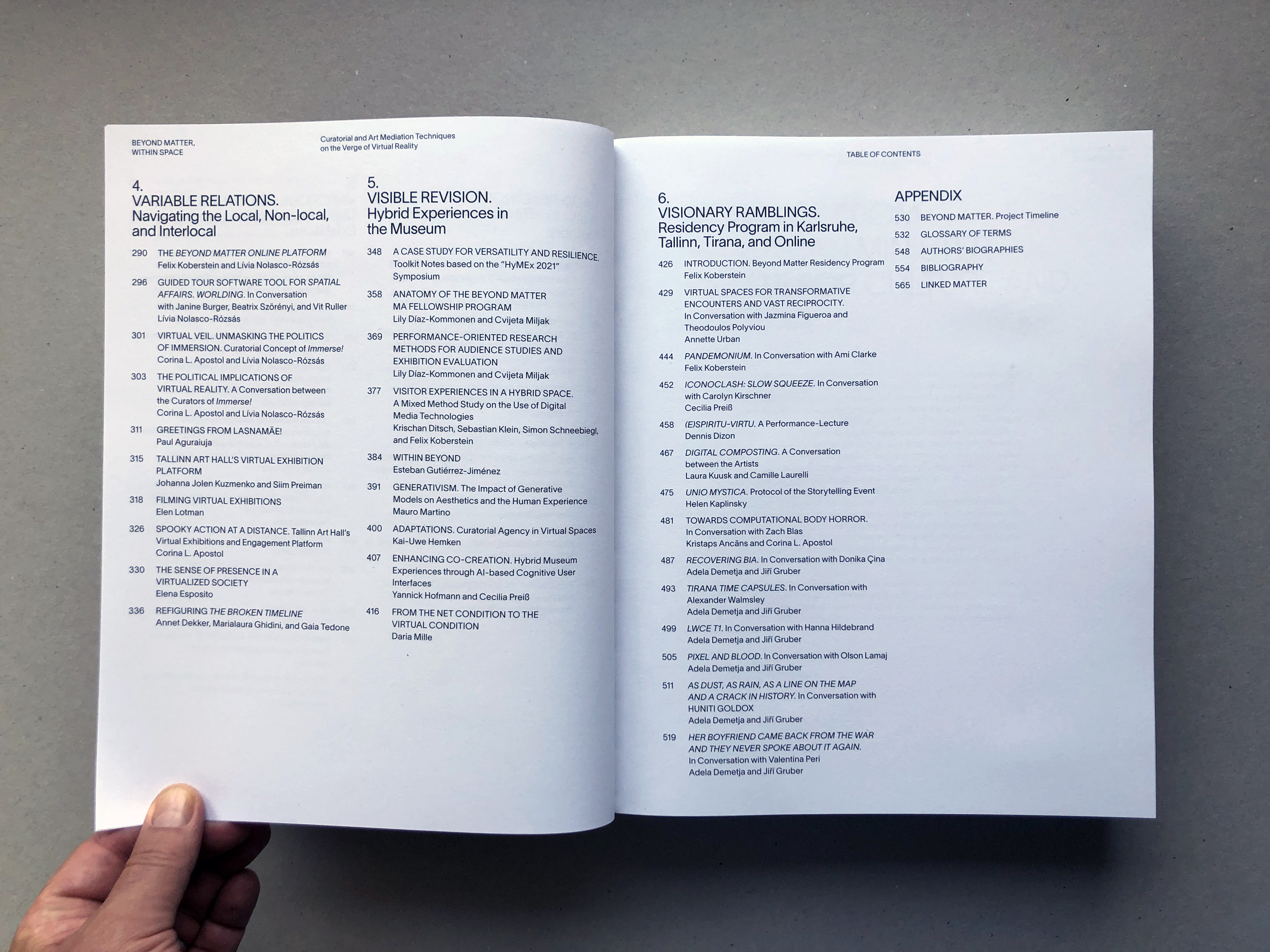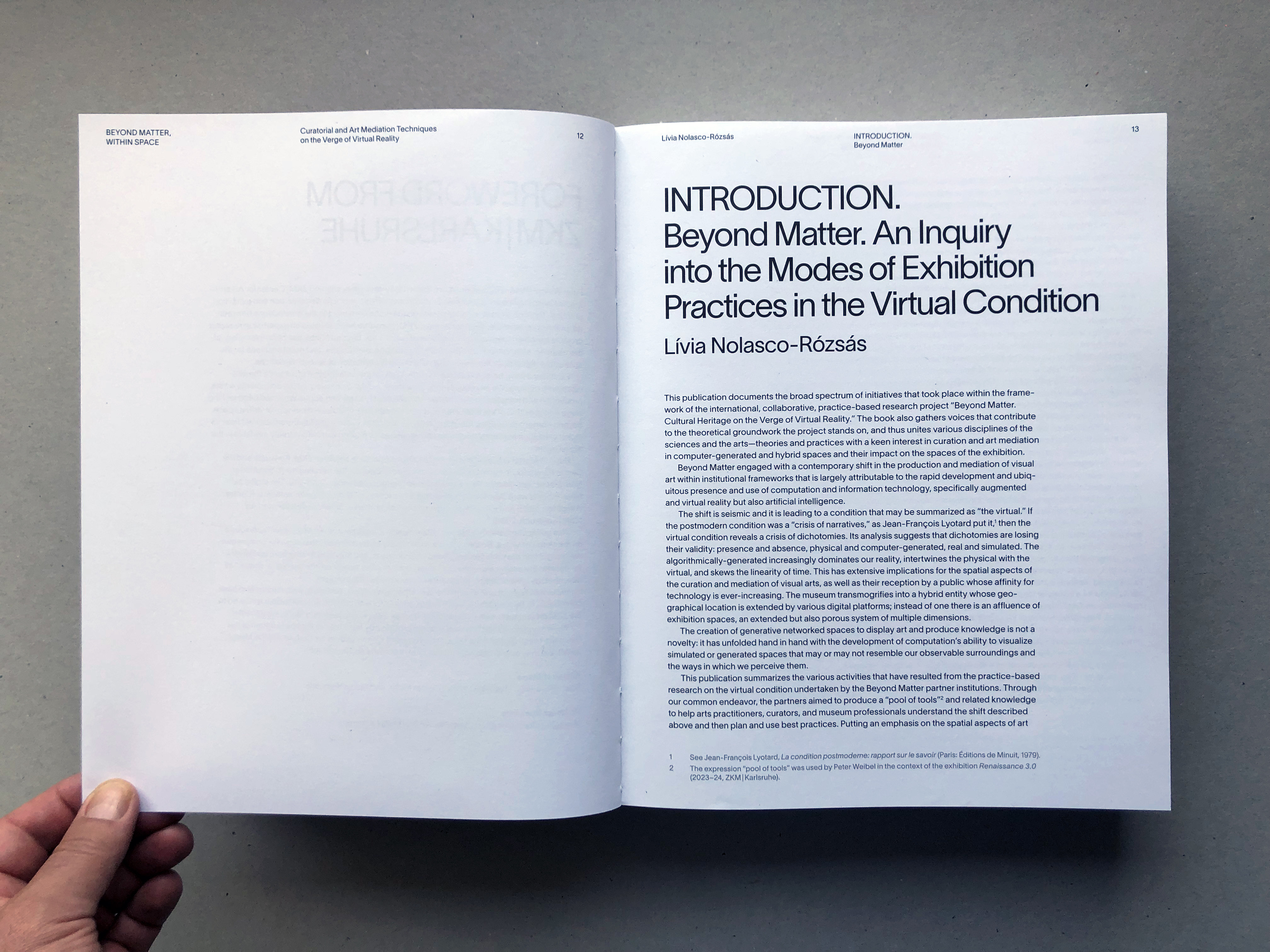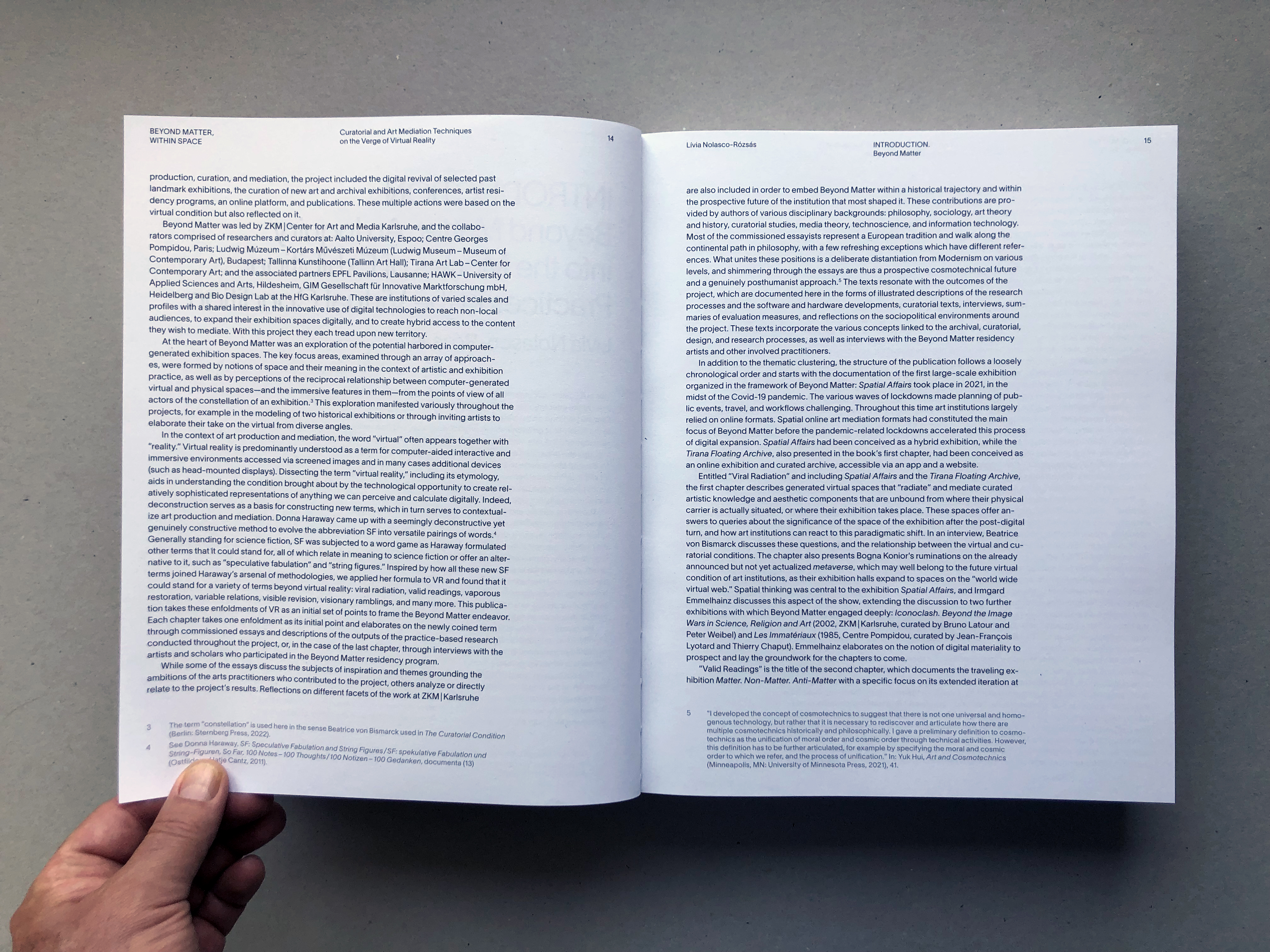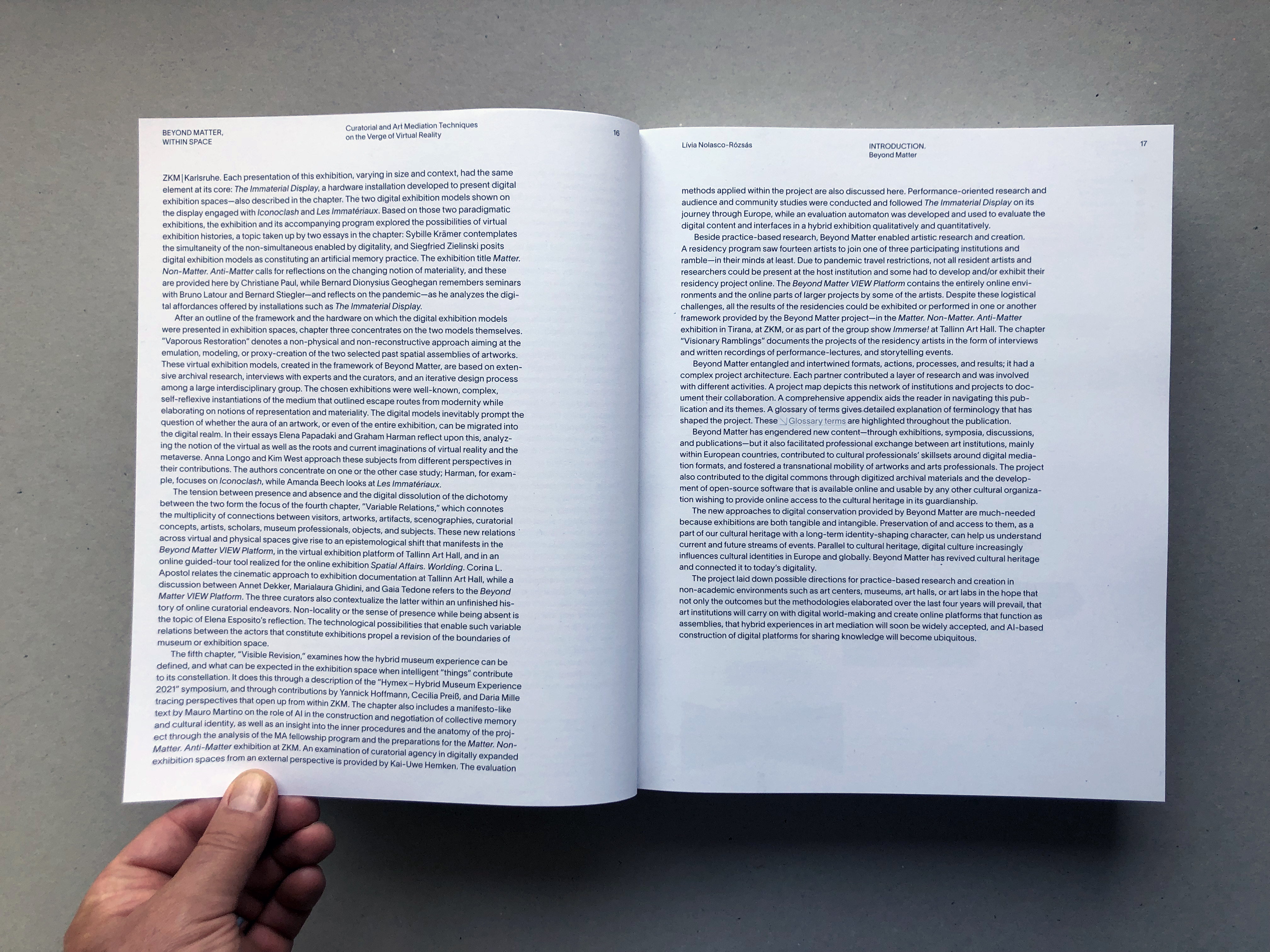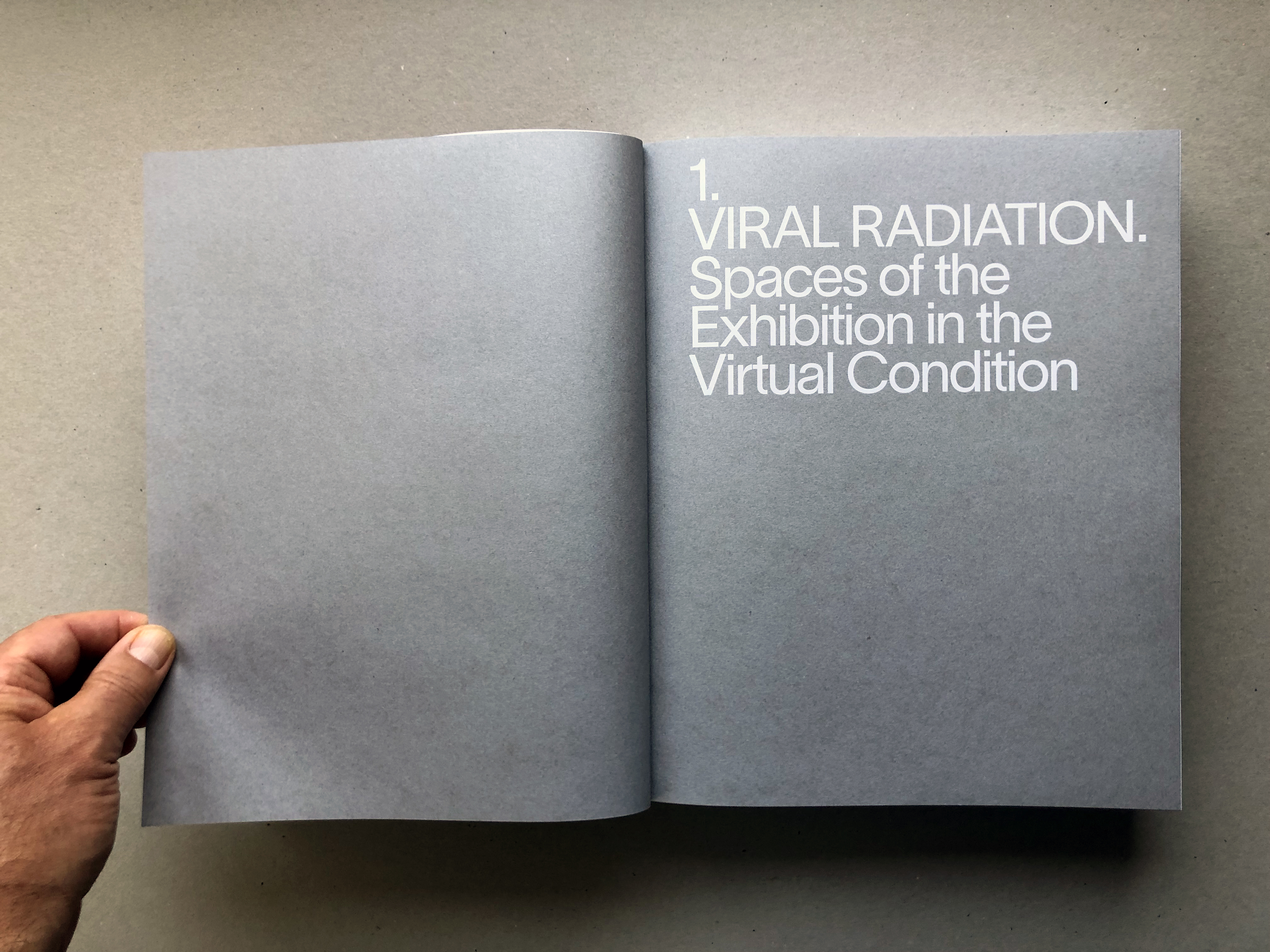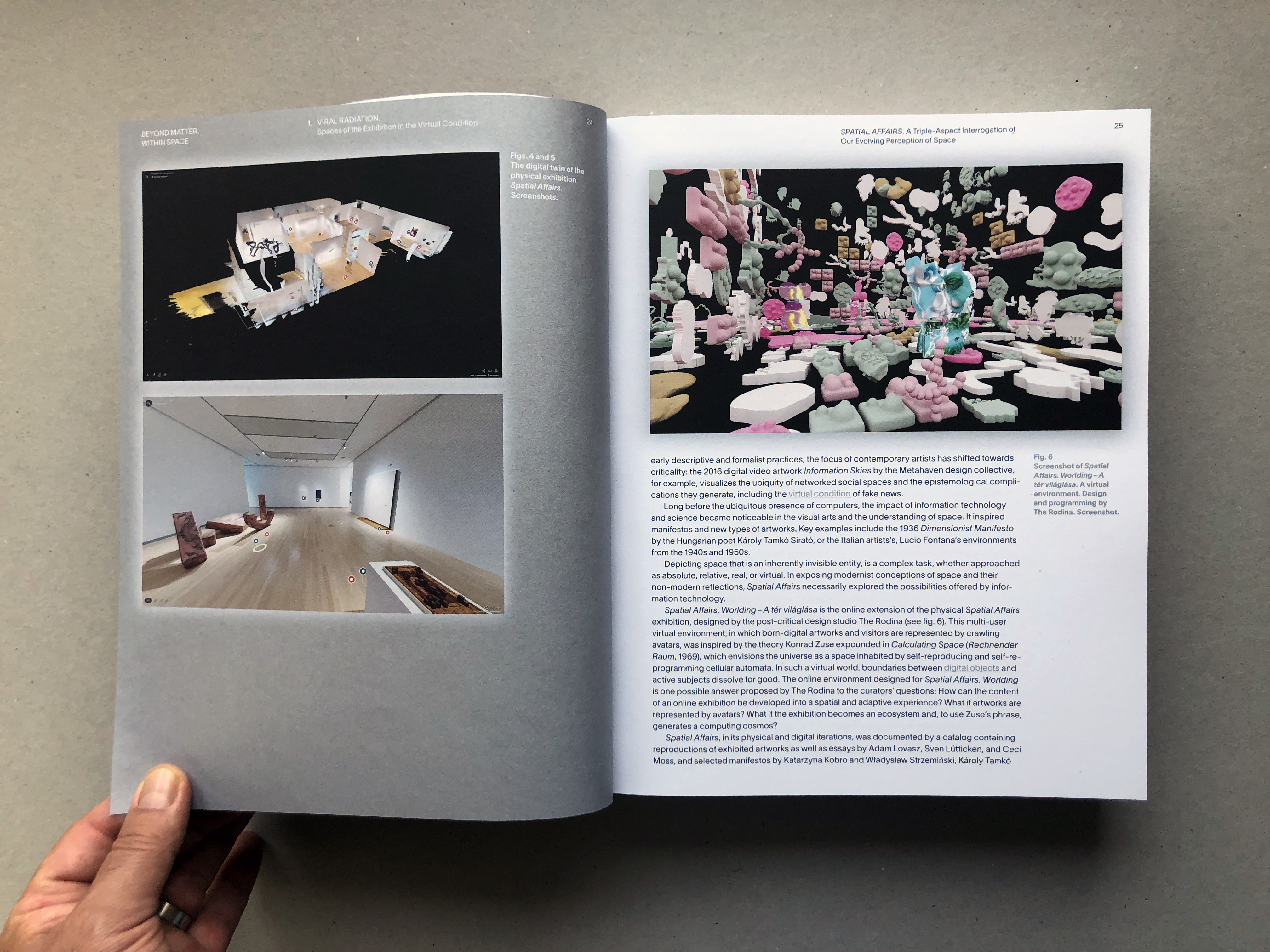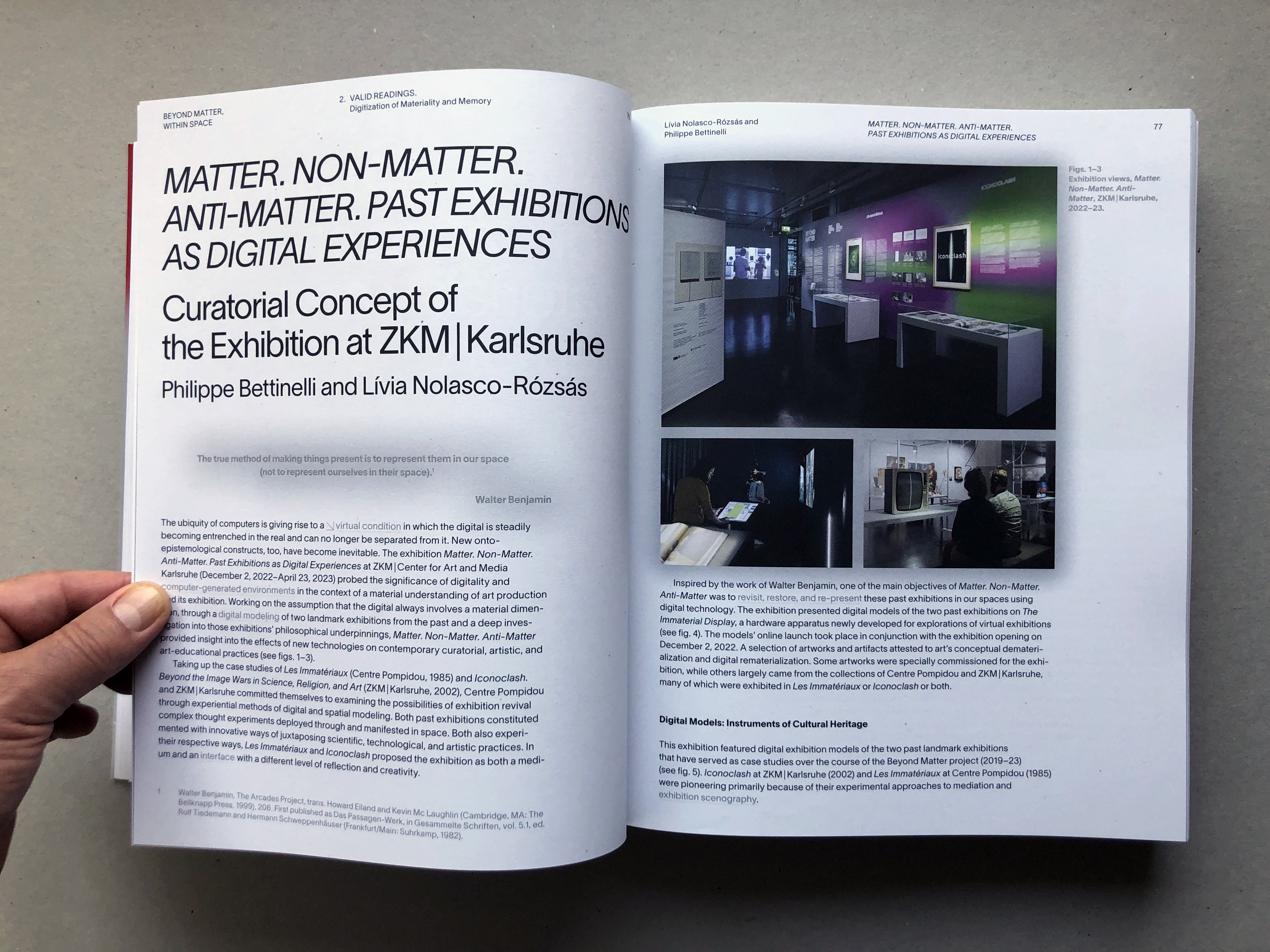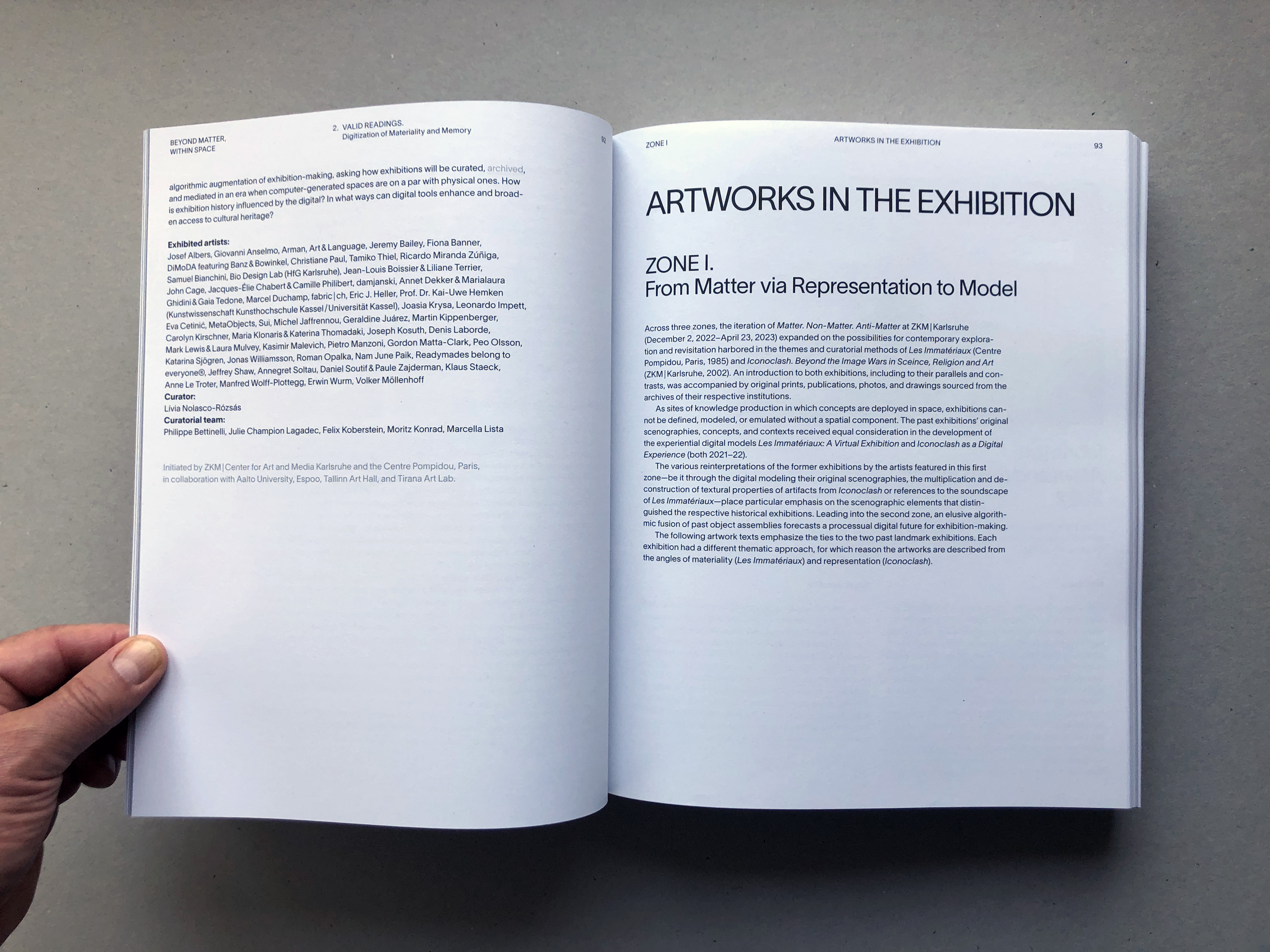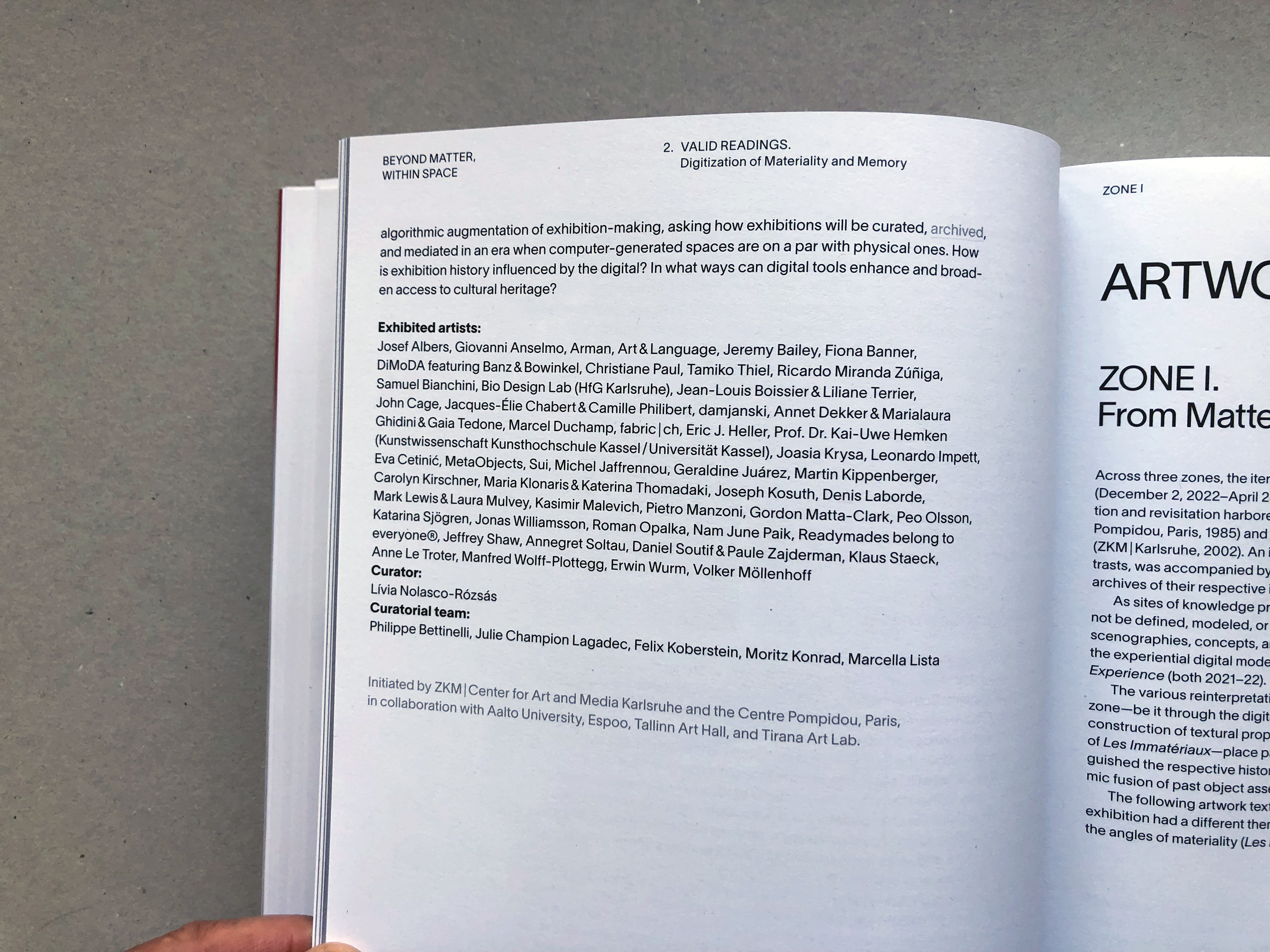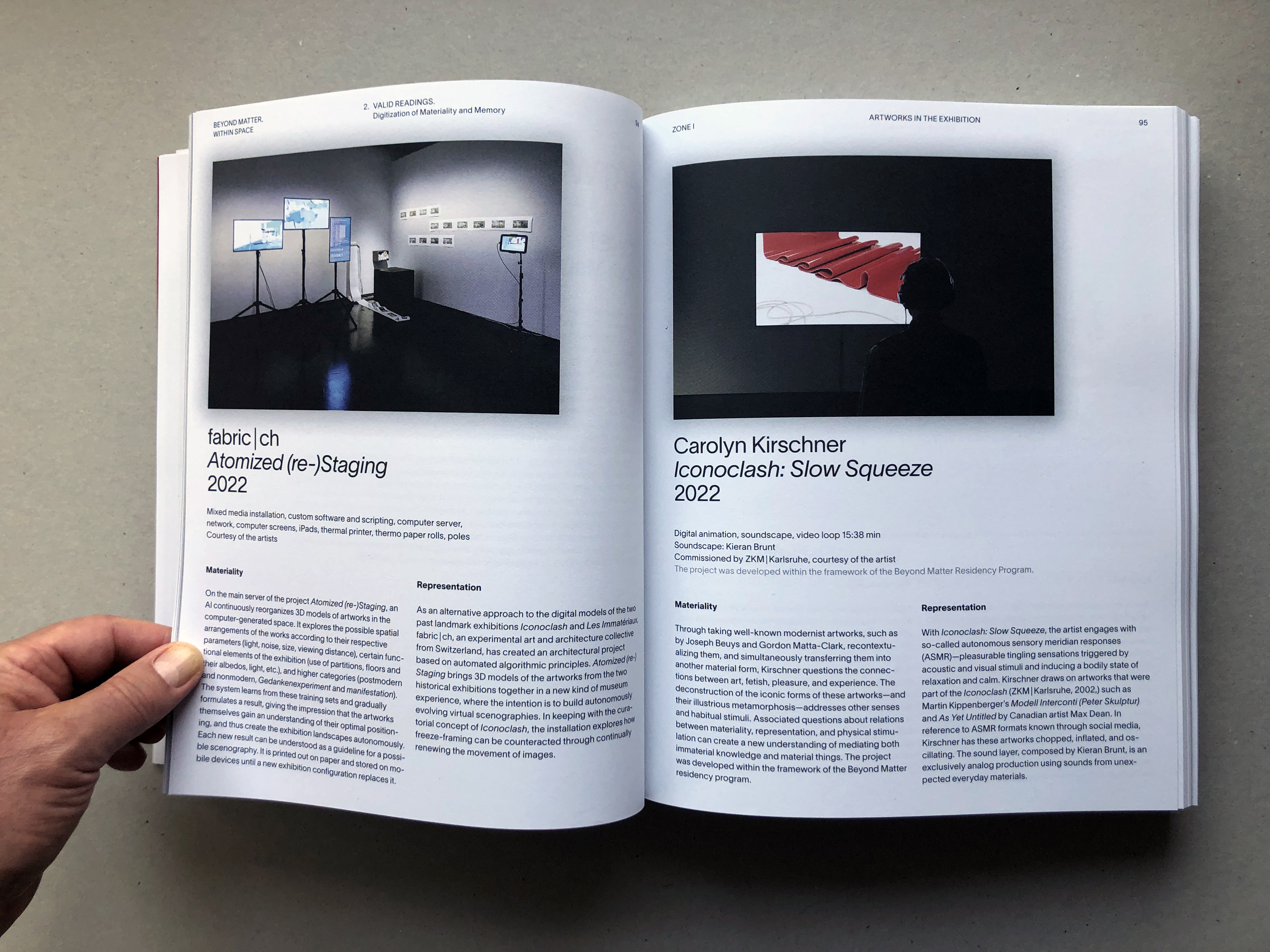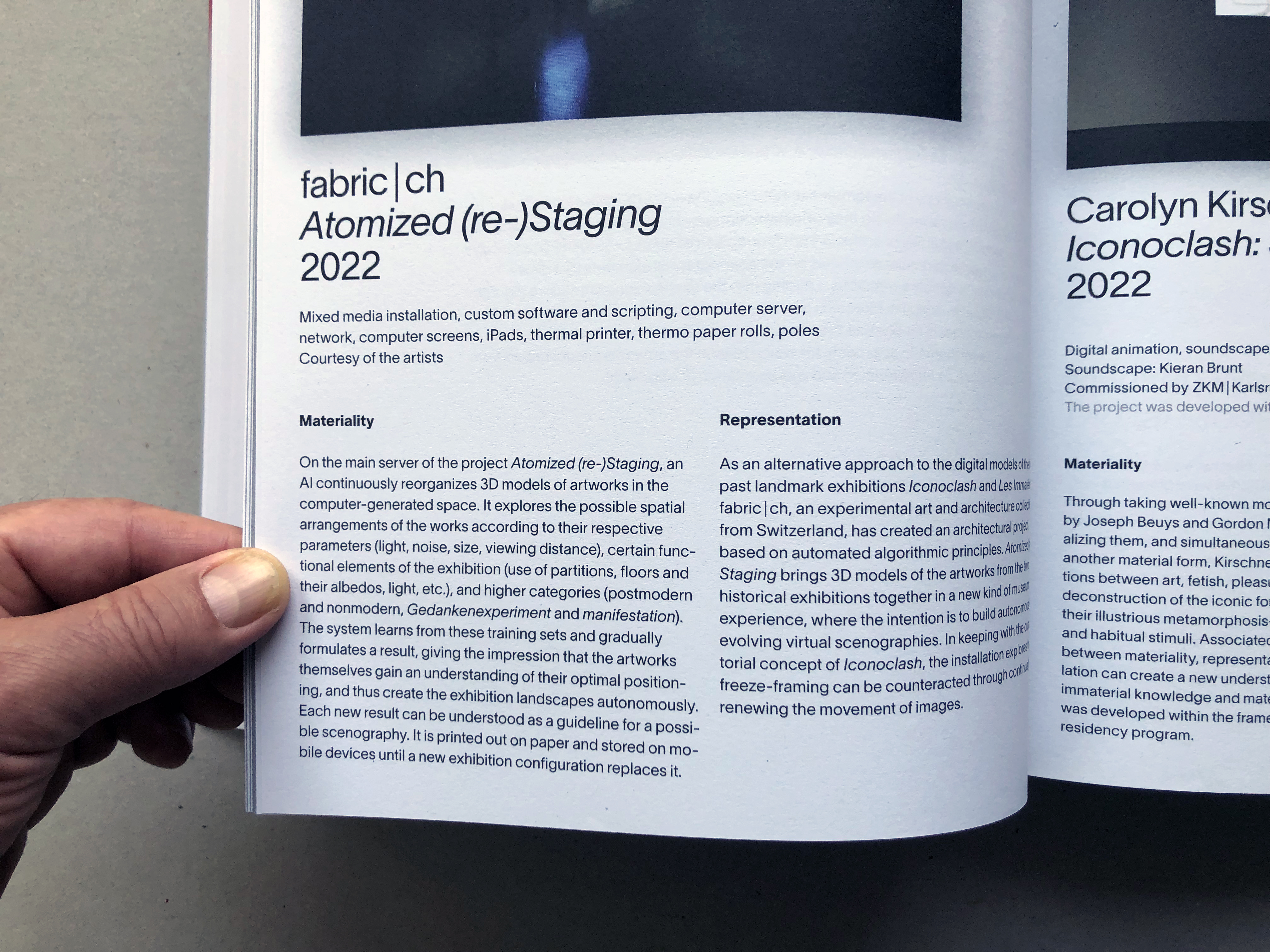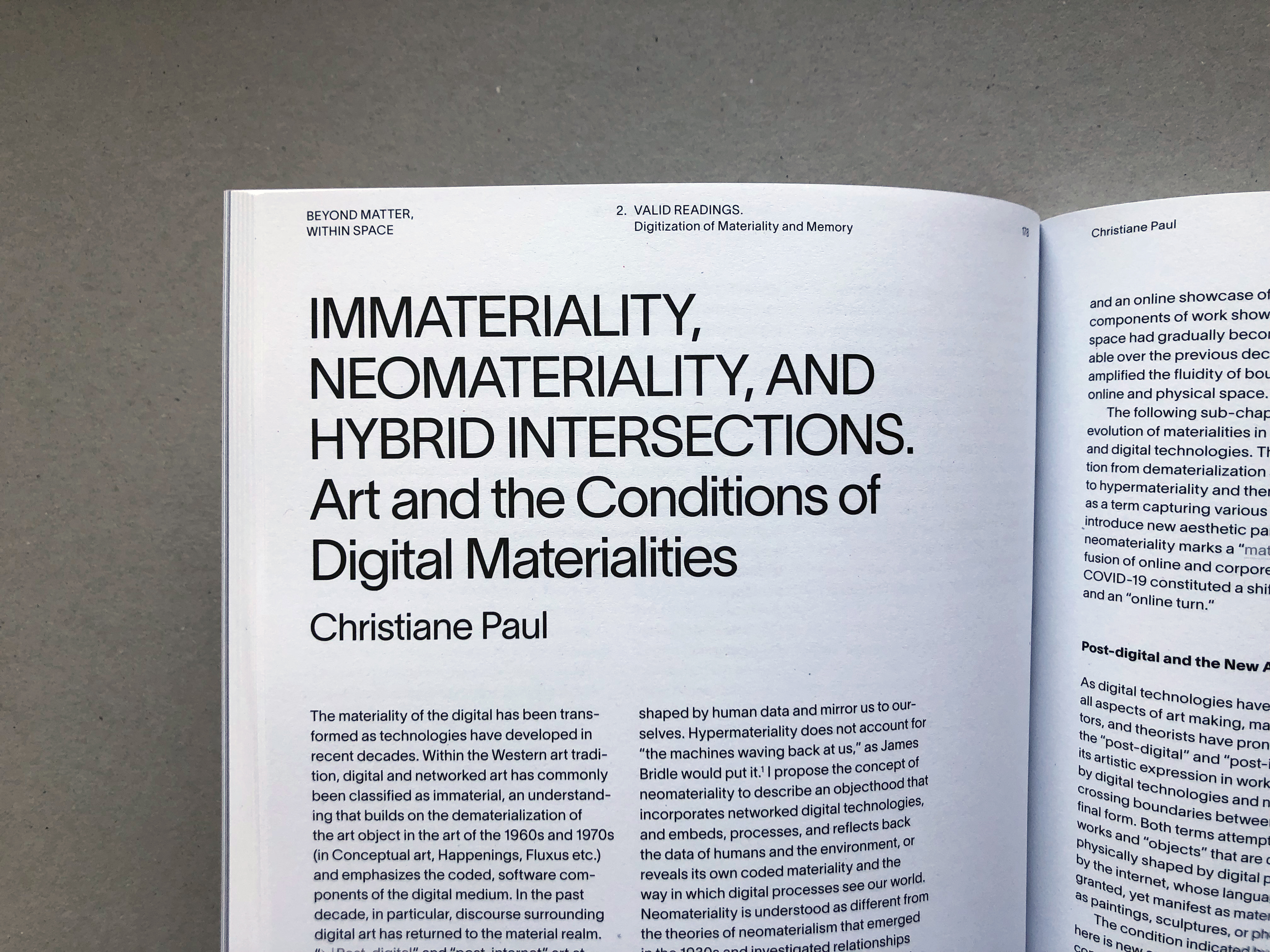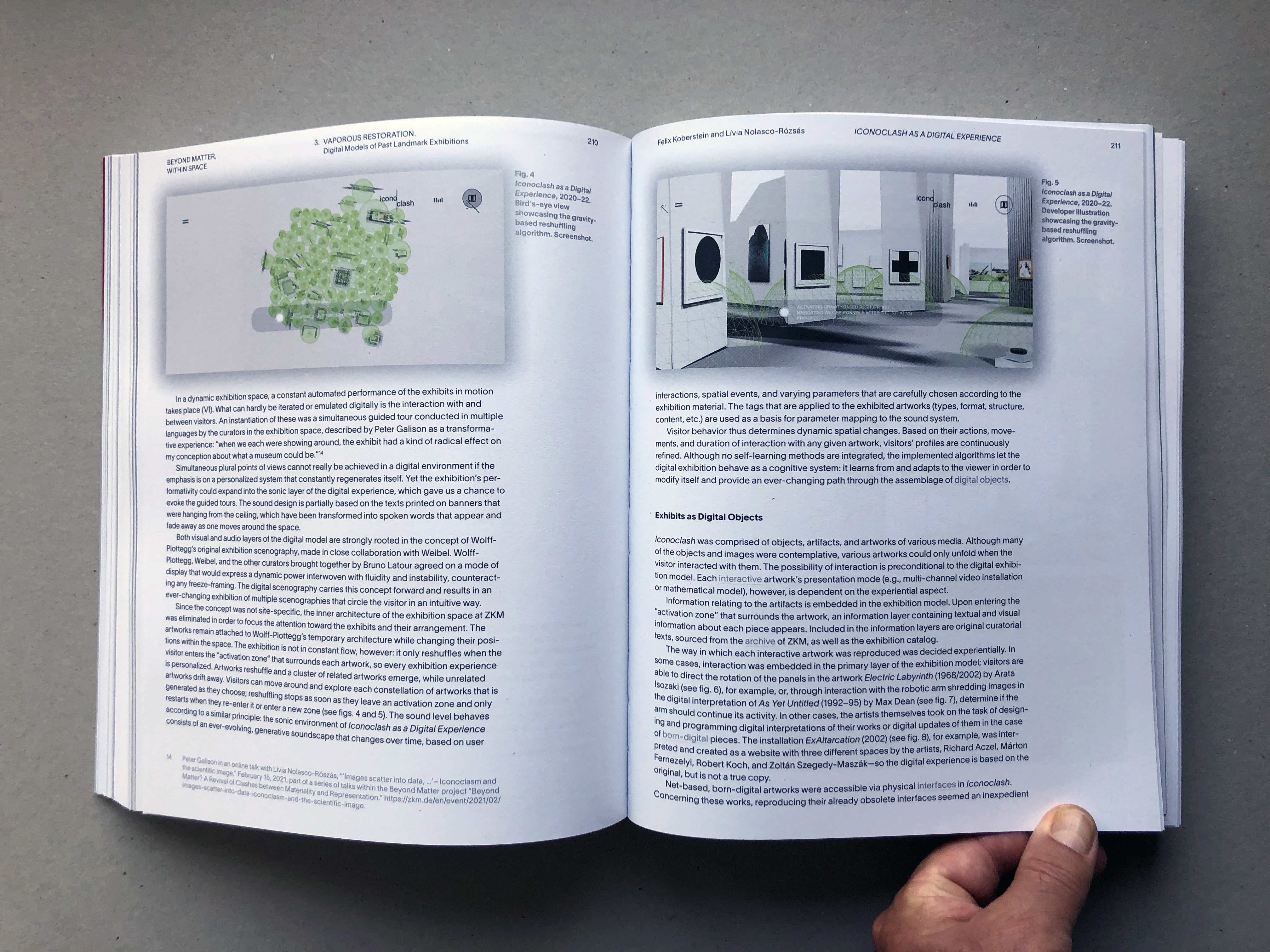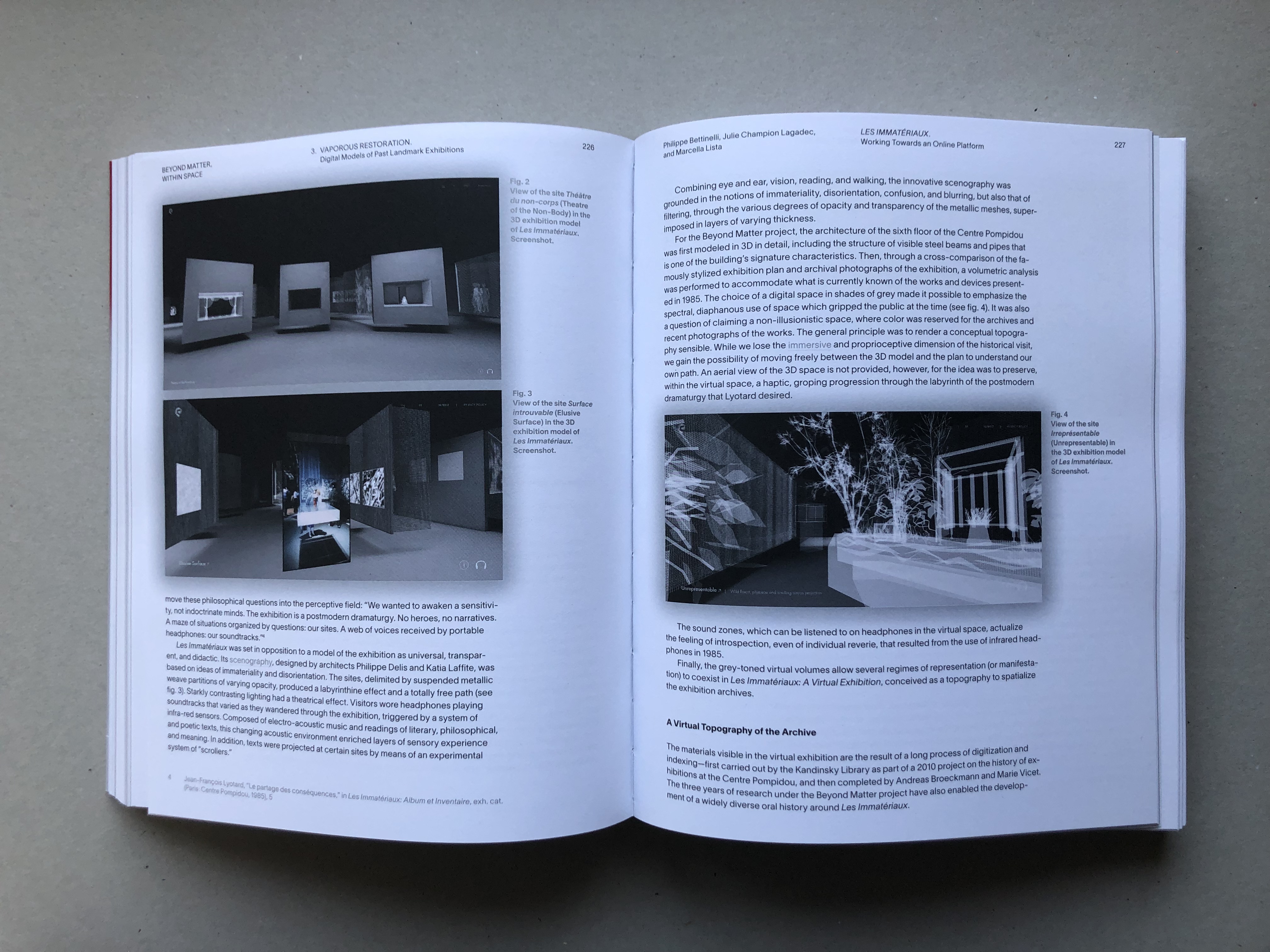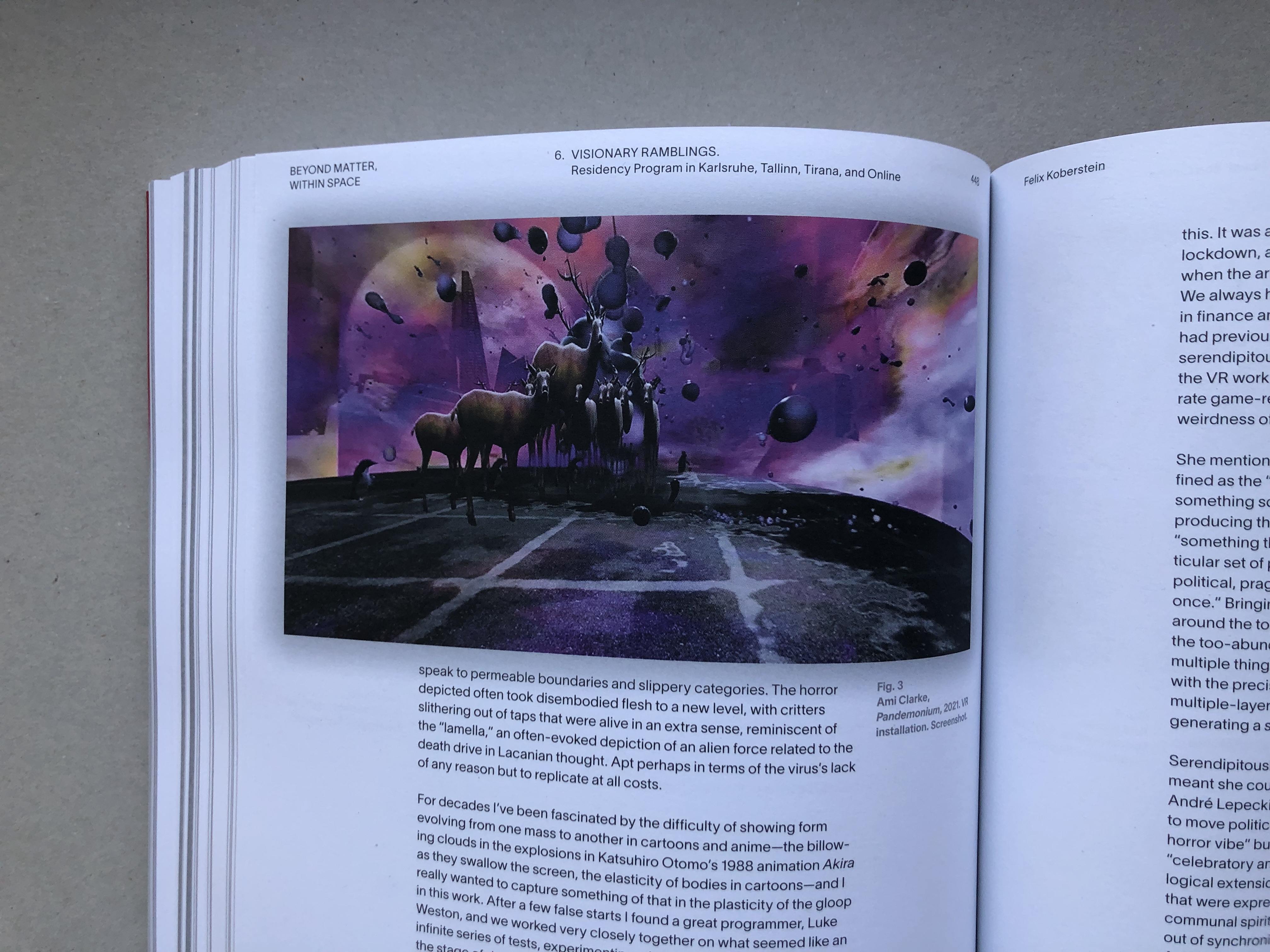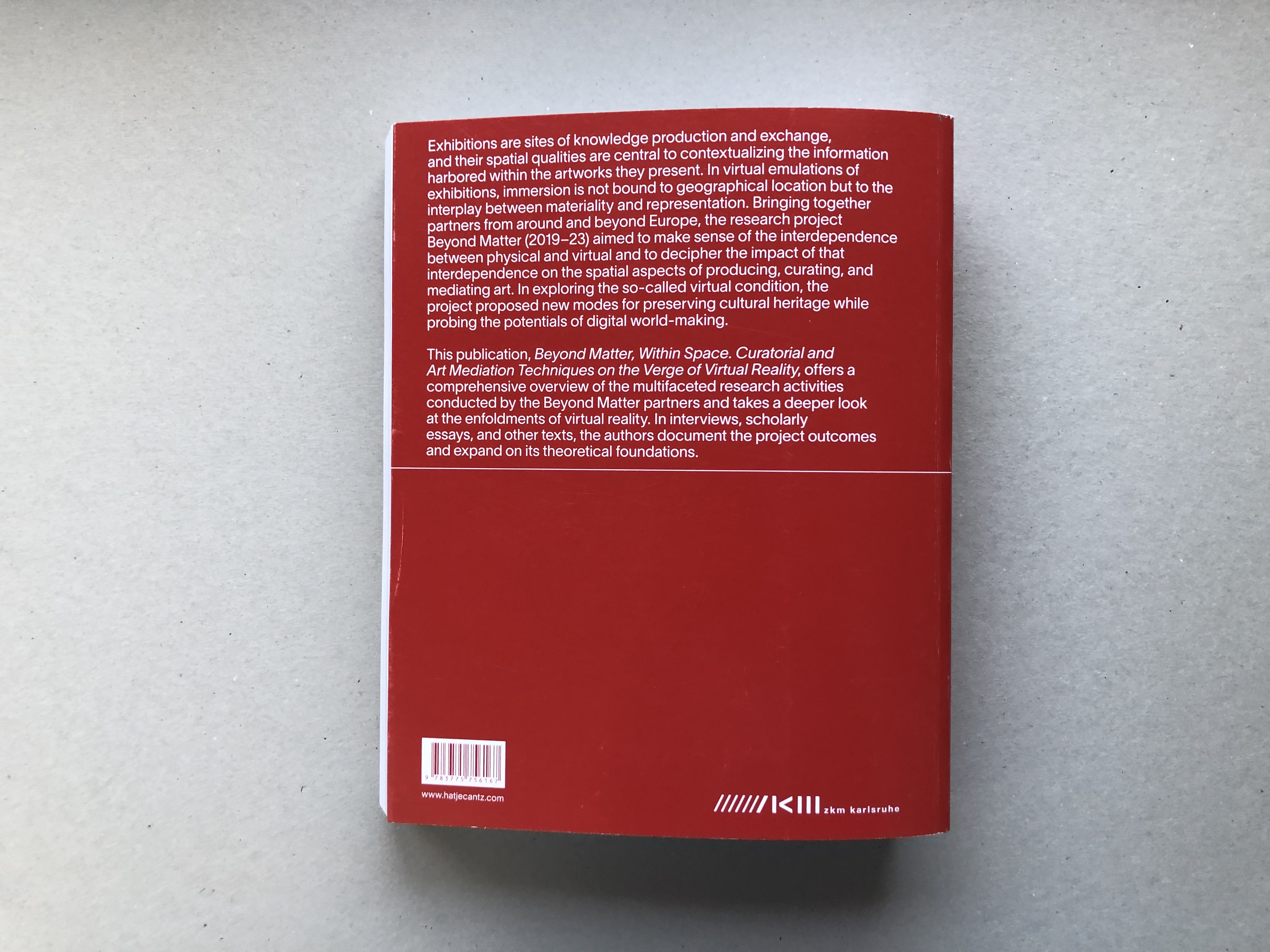Note: Early last July, fabric | ch took part in the Moviment exhibition-festival at Centre Pompidou, in Paris.
Organized in 10 chapters (Red thread; The bedroom, the house, the city; In the spotlight; Aloud, Here and elsewhere, Other-worldly; Of gesture and time; To the max; Beyond matter; The grand finale!), this was the occasion – following the words of the curators – to "reactivate the essence of the Centre Pompidou ideals: to assemble all the different ways of encountering creativity, understanding it, participating in it; to be a monument in motion, a "moviment."
It was truly a success, with outstanding guests and a very interesting hybrid museum format, somewhere in-between exhibition and performance, talks and workshops.
In this context and during "Chapitre 9: Par-delà la matière" curated by Marcella Lista & Philippe Bettinelli, fabric | ch presented recent works about digital exhibitions.
-----
By fabric | ch
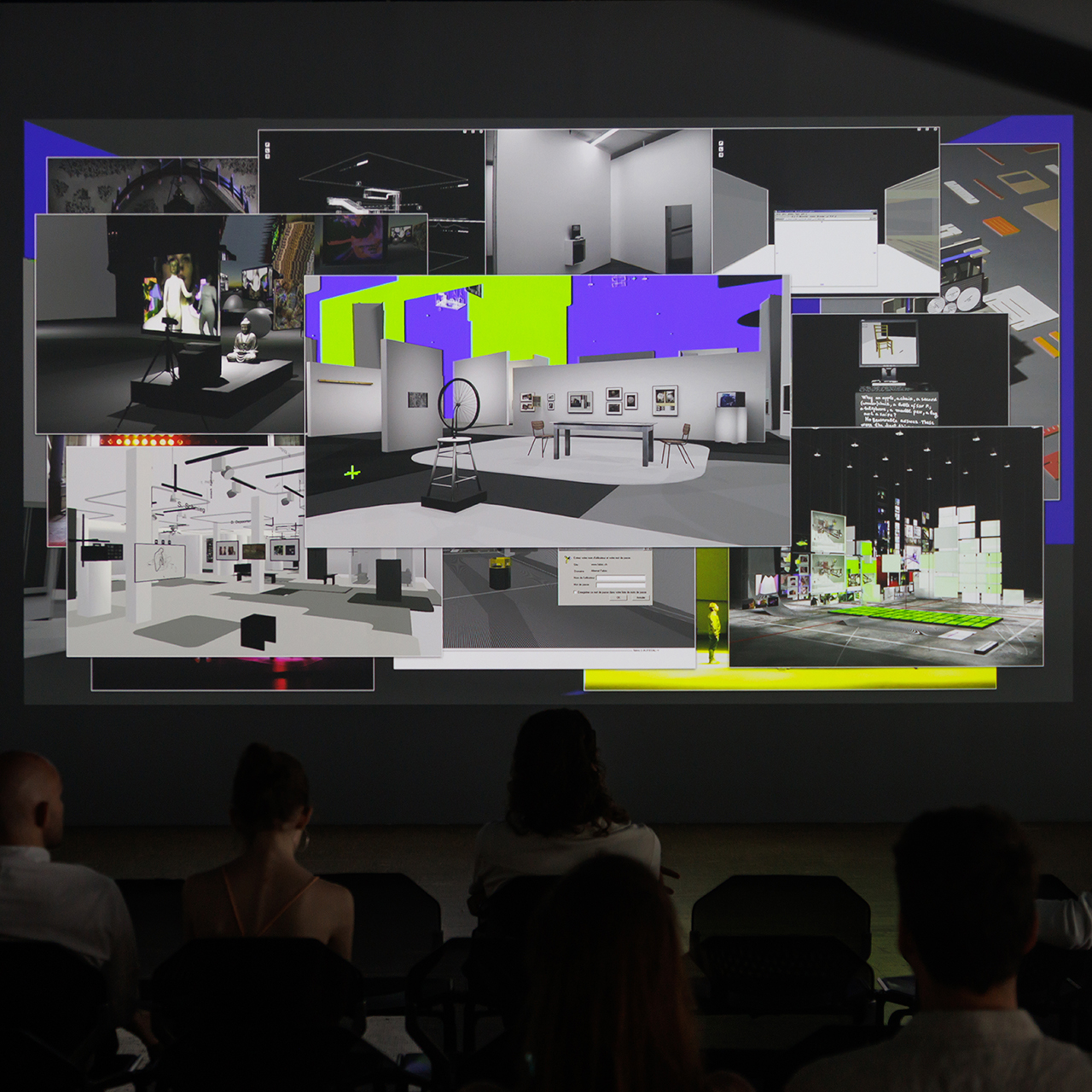
A few pictures from Moviment / Chapter 9:
(with fabric | ch, M. Lista & Les Immatériaux, M. Klonaris & K. Thomadaki, H.U. Obrist – "Résistances" project with LUMA Foundation and P. Parreno, J.-L. Boissier - Electra / Pictures by C. Babski & H. Veronese)
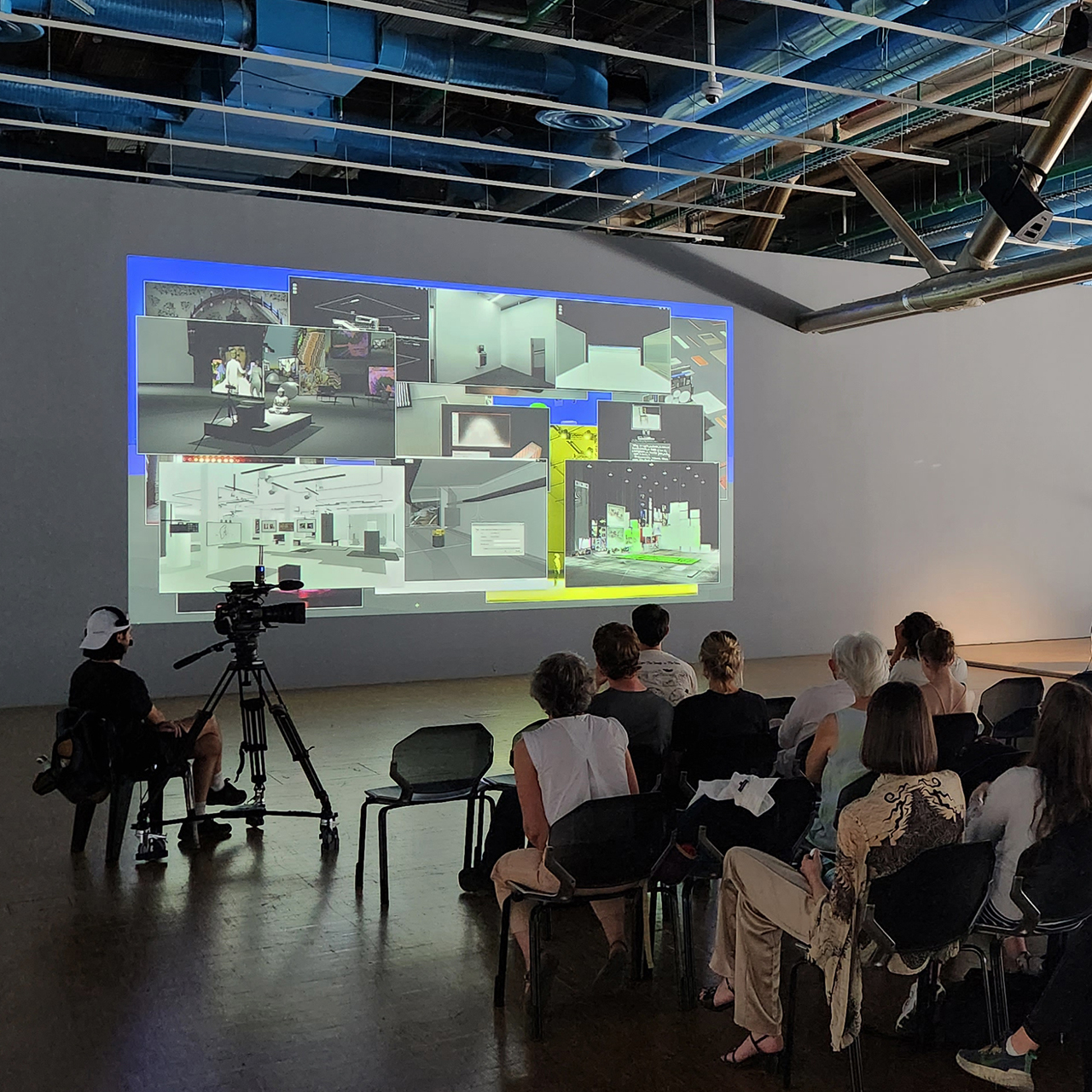
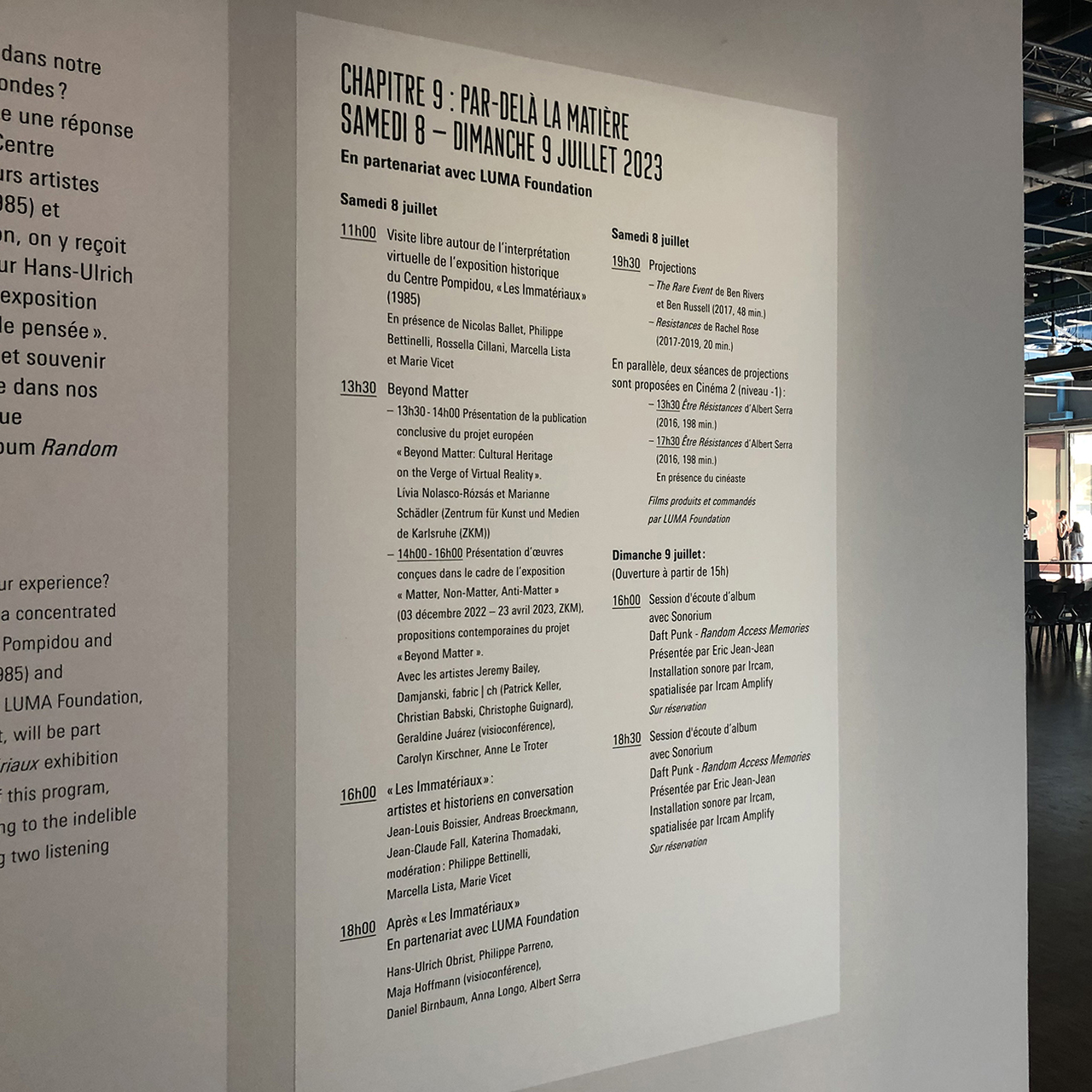
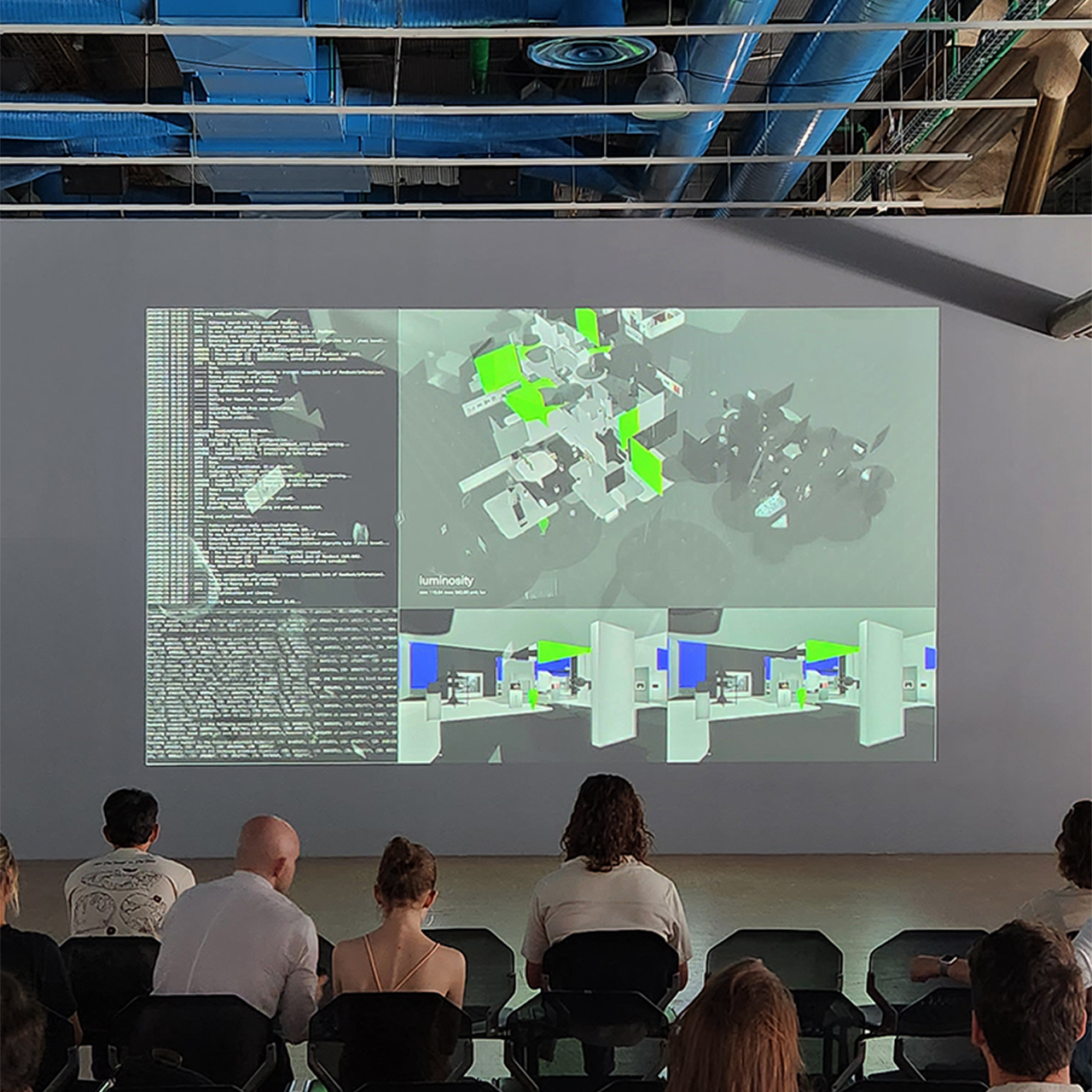
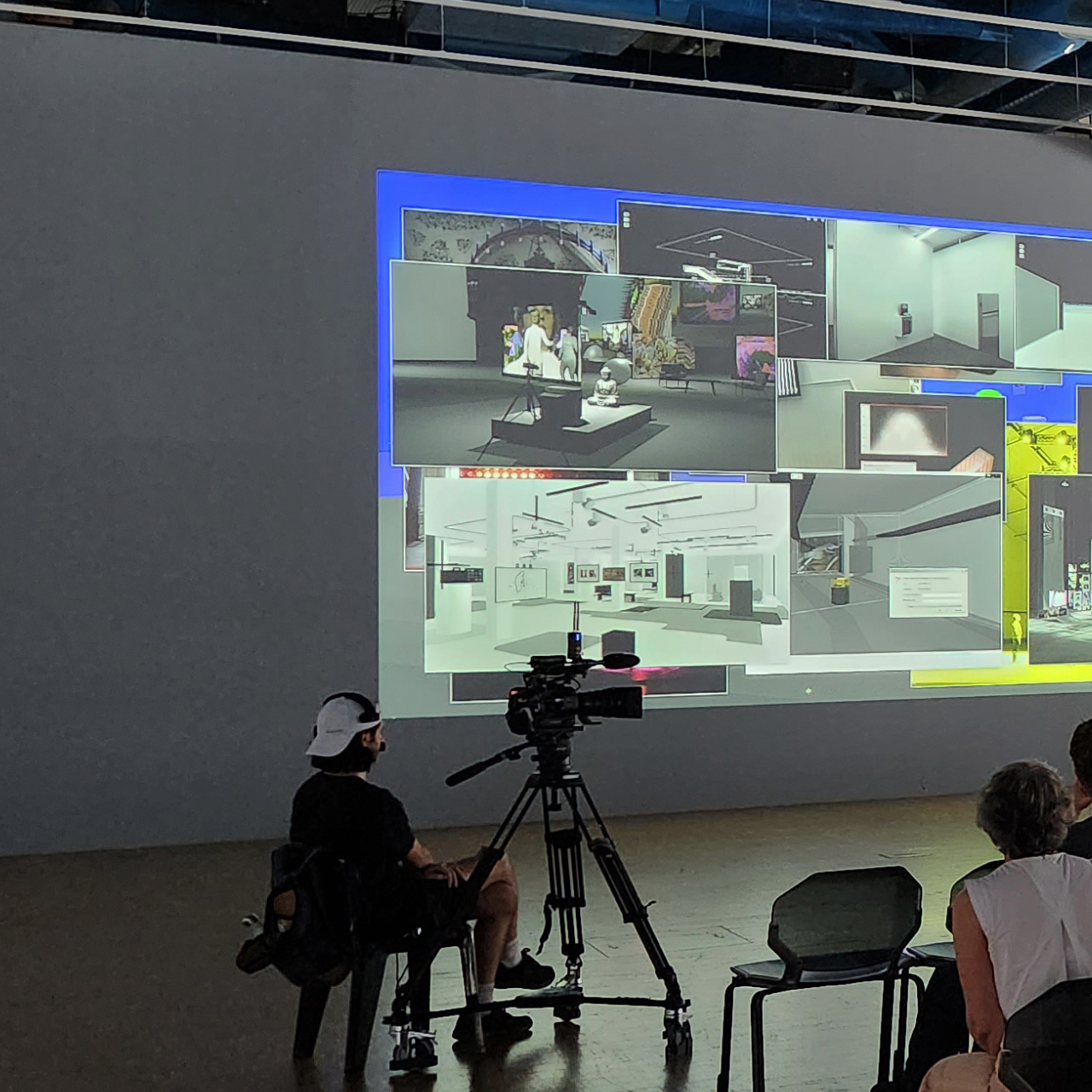
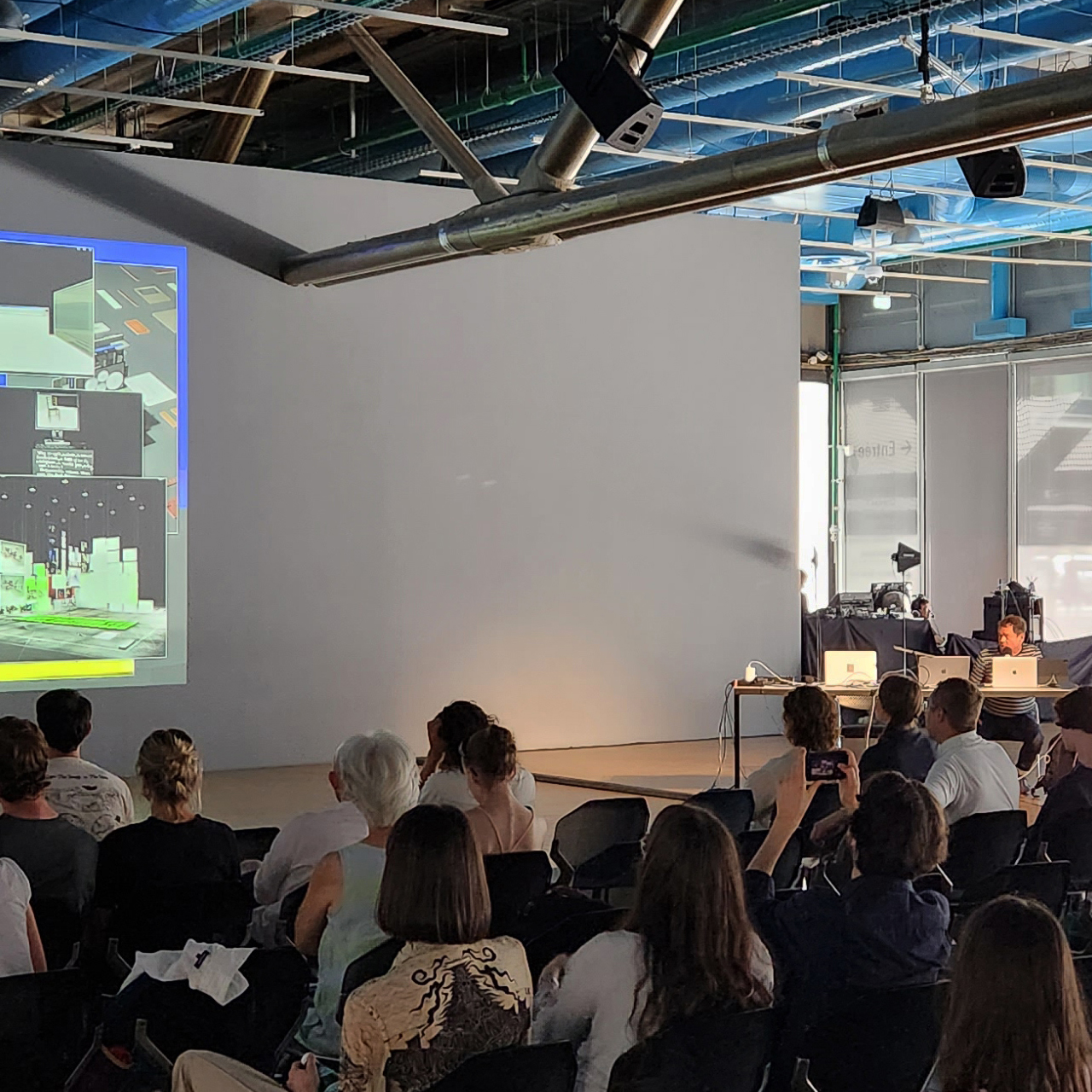
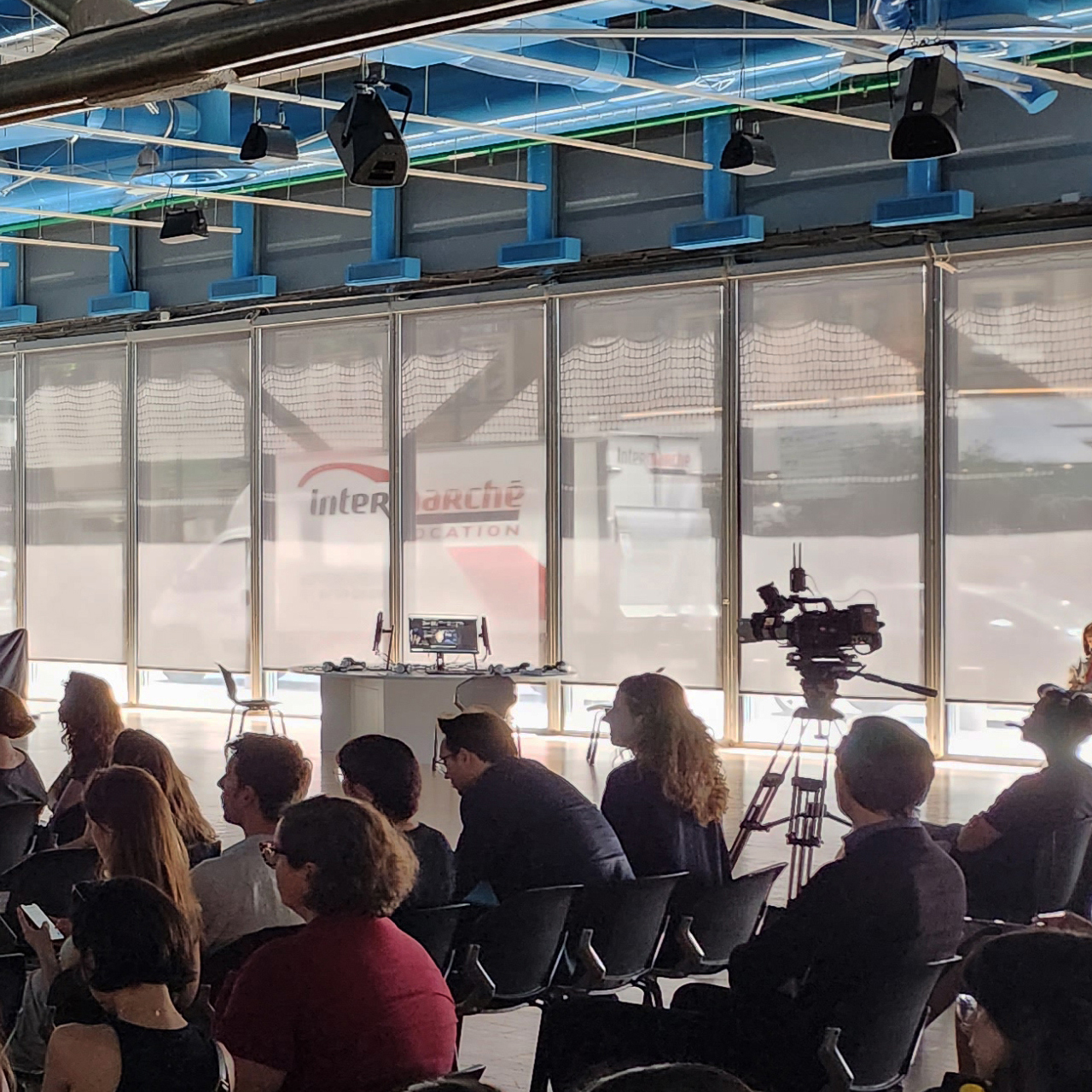
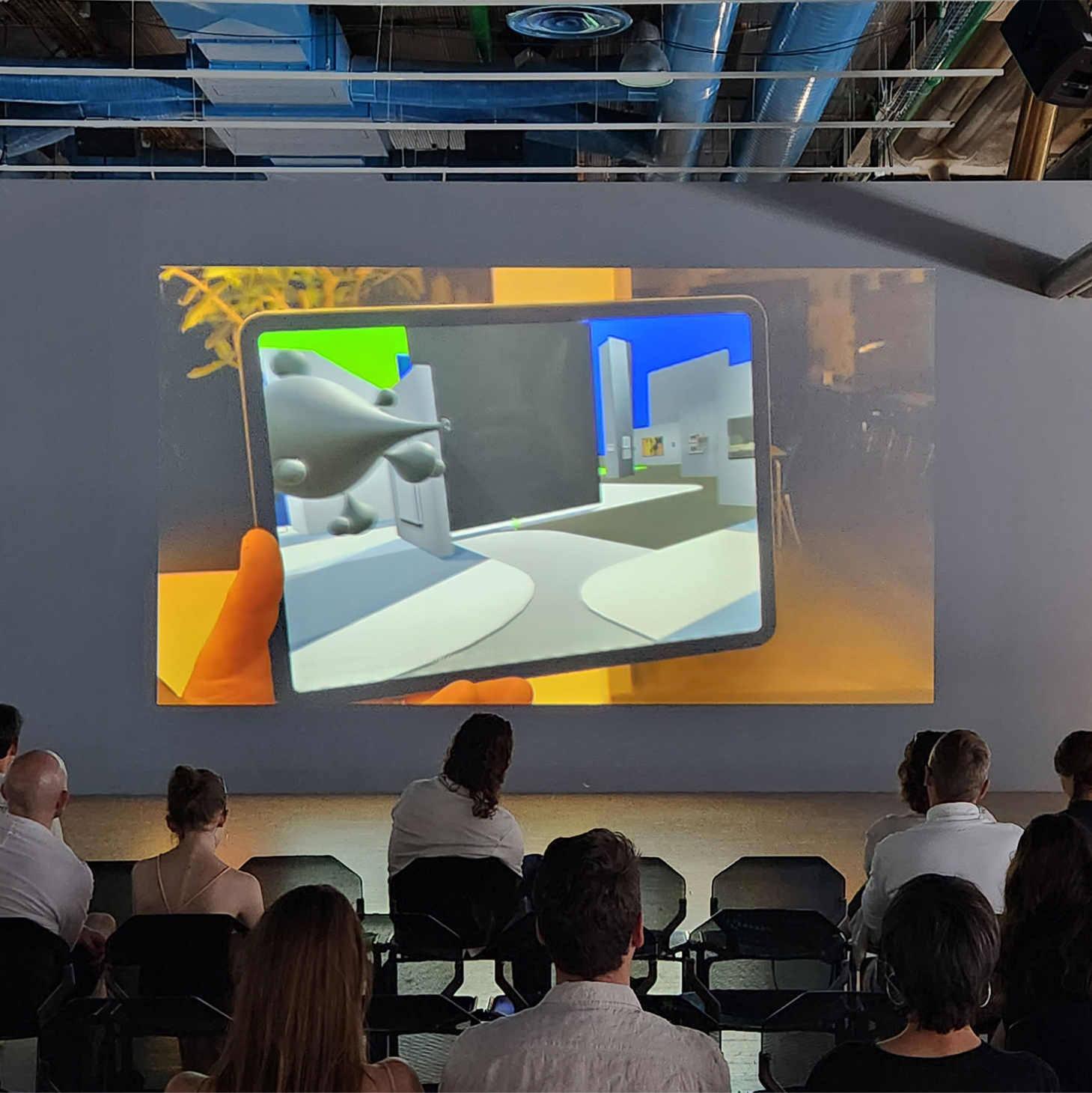
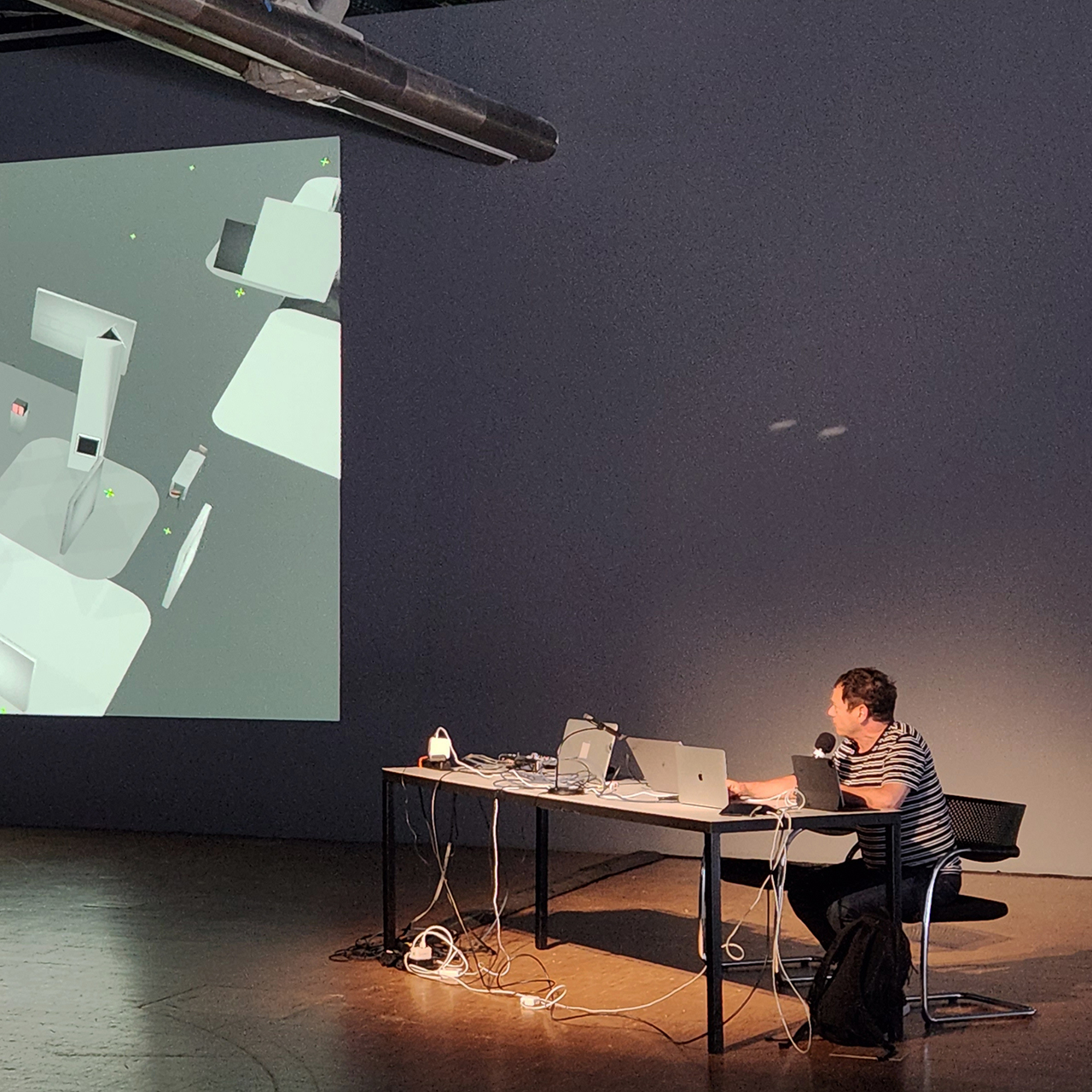

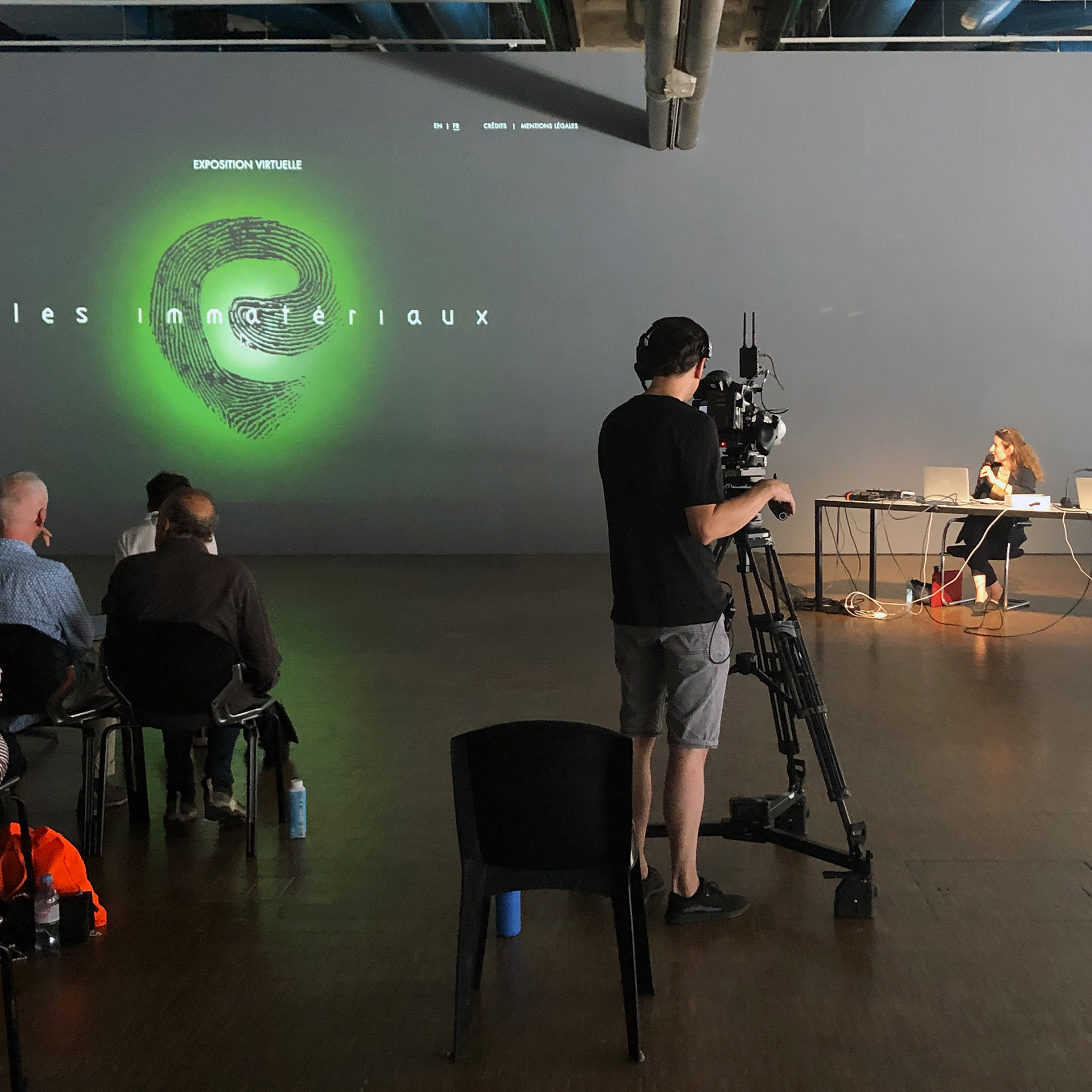
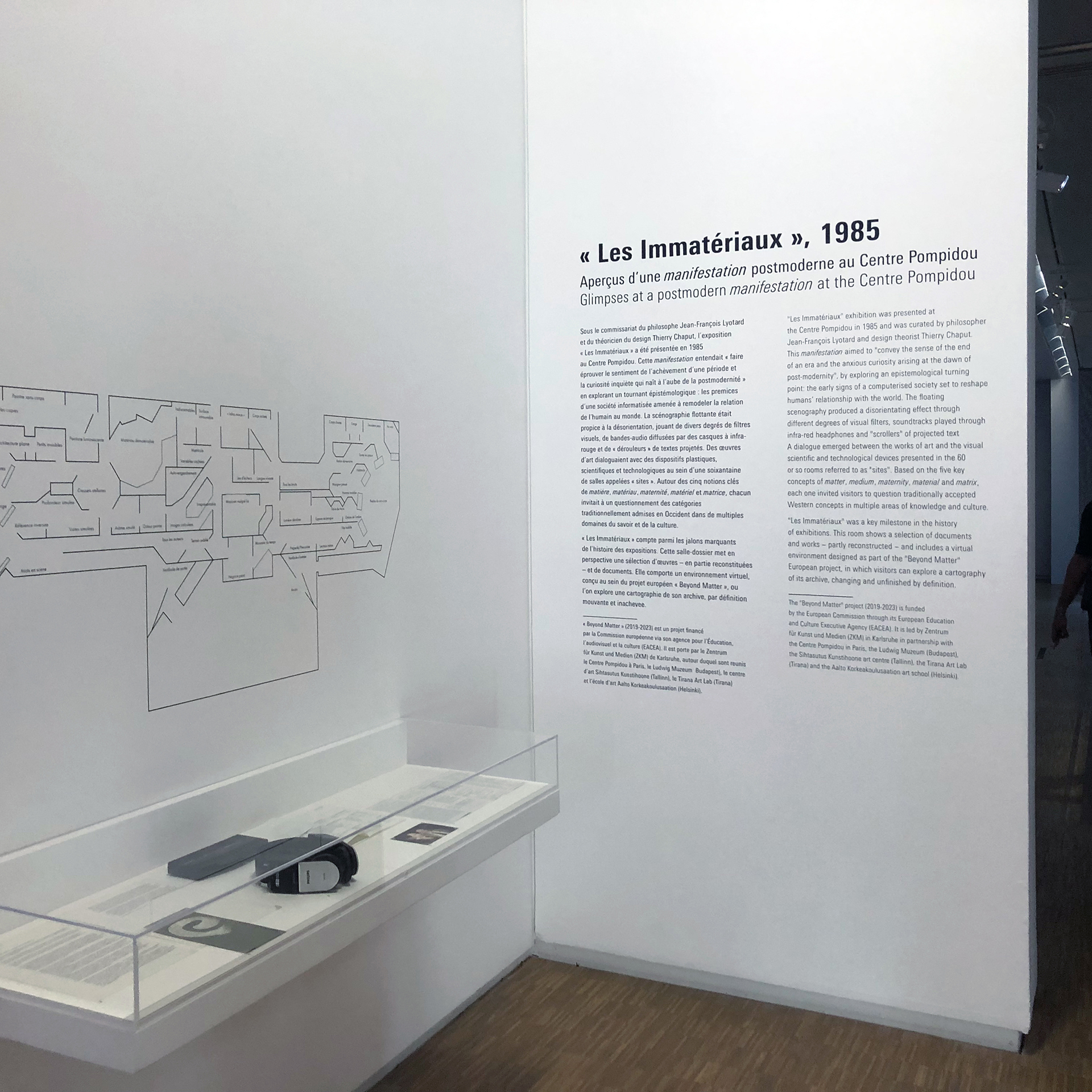
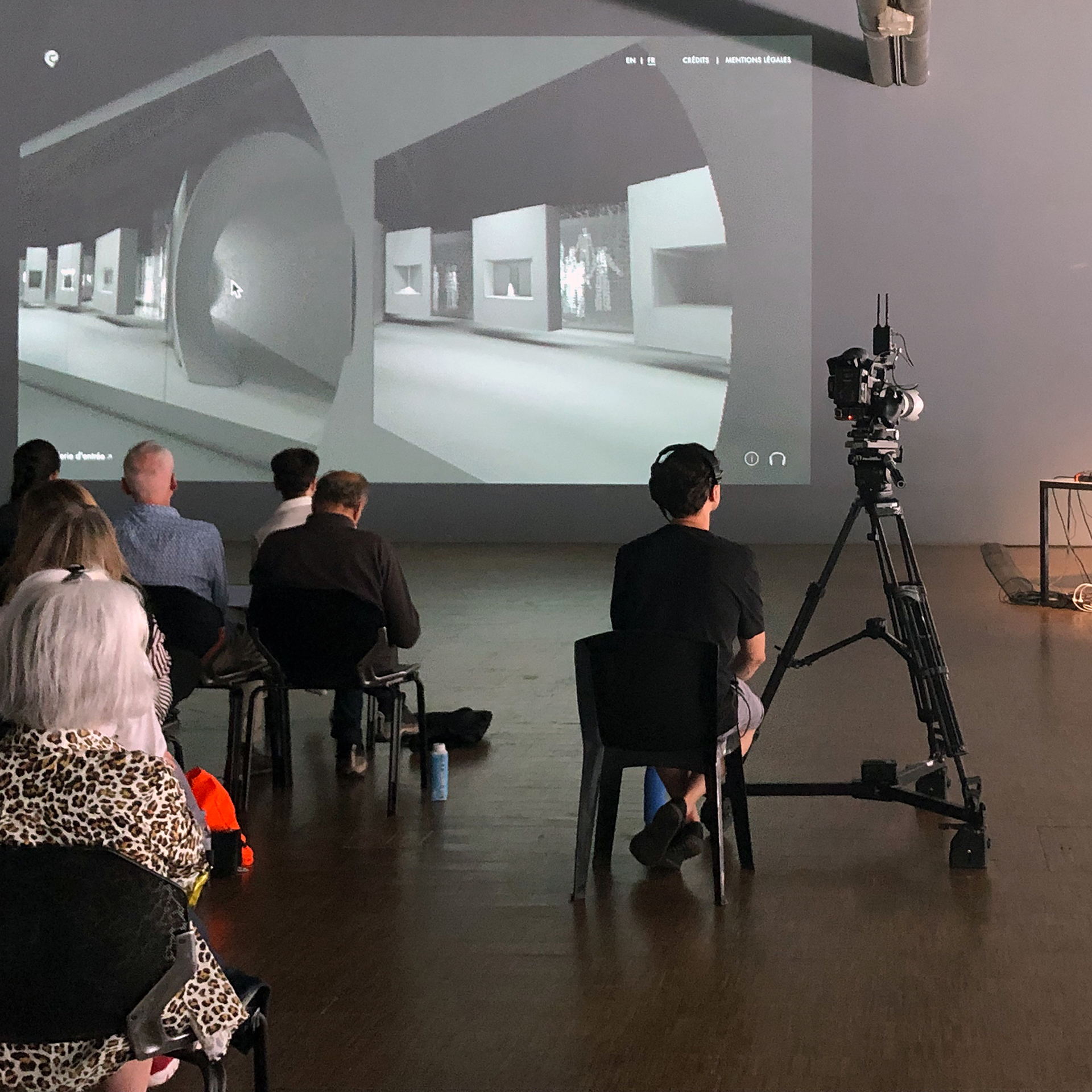
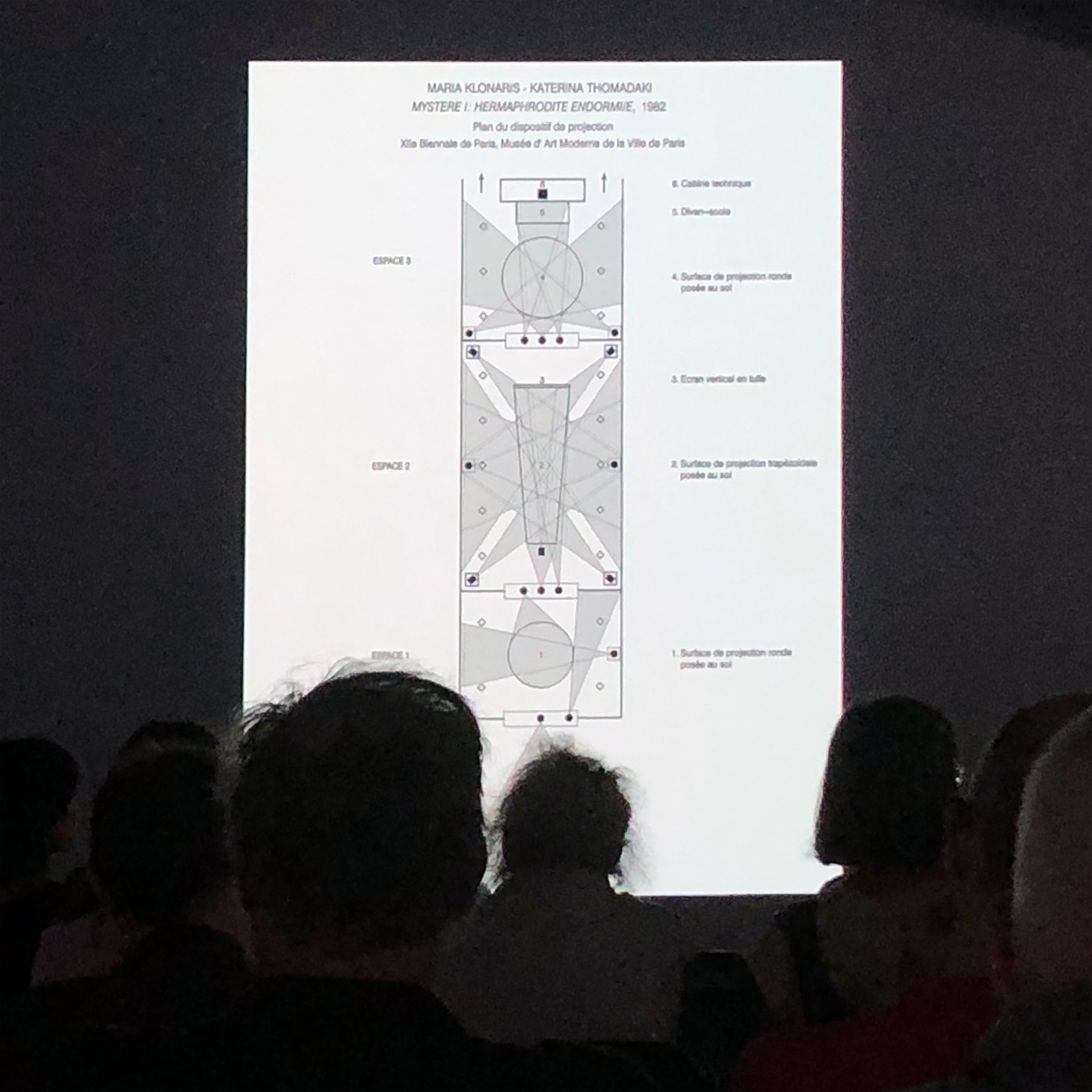
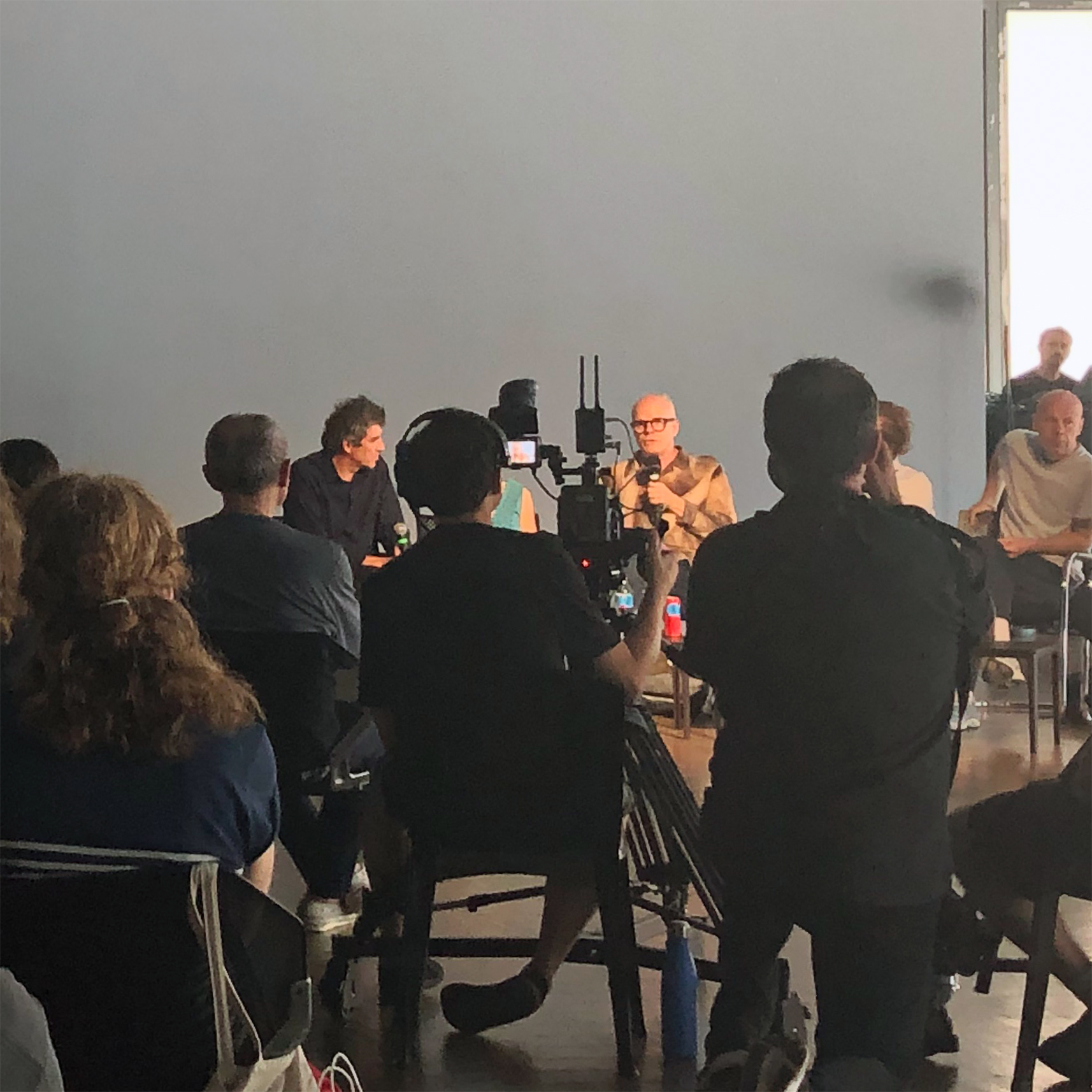
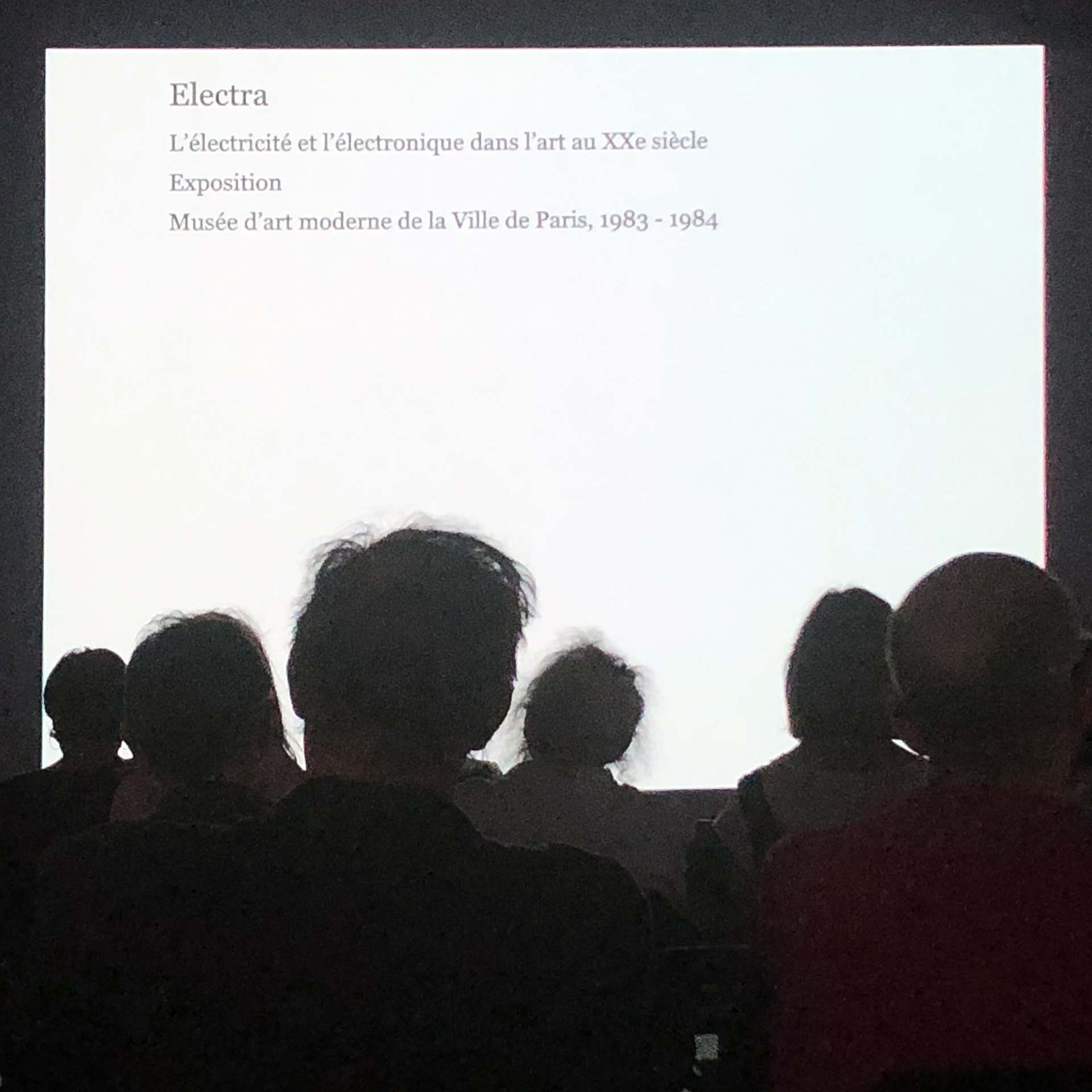
Via Centre Pompidou
-----
Beyond Matter / Par-delà la matière
Sat 8 – Sun 9 July 2023

Combining technology and memory, the penultimate chapter of Moviment looks back at two major cultural events in the world of art and music, and the ways in which they can be perpetuated, revived or experienced beyond their materiality and topicality.
In partnership with LUMA Foundation
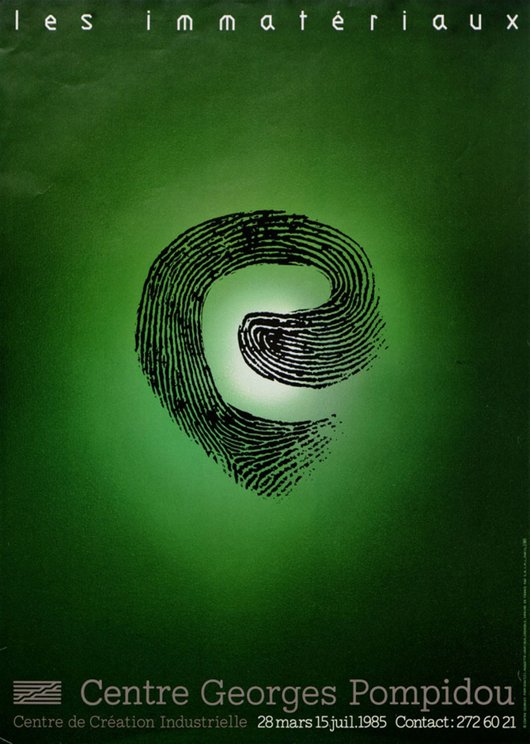
Affiche de l’exposition "Les Immatériaux", 1985 – © Centre Pompidou. Conception graphique : Grafibus.
Retour sur « Les Immatériaux »
Arts plastiques, Nouveaux médias Exposition, rencontres
Organisé par les commissaires Jean-François Lyotard et Thierry Chaput en 1985, « Les Immatériaux » était un essai aux fondements philosophiques adoptant l’exposition comme média ou interface. En faisant dialoguer œuvres d’art, technologies et documents scientifiques, les commissaires interrogeaient la condition humaine à l’ère des nouvelles technologies, dans différents domaines de la vie physique et psychique. La scénographie, particulièrement novatrice, privilégiait la désorientation, la stimulation de tous les sens et l’interactivité. Les visiteurs, dont le parcours n’était pas contraint mais « induit » par des écrans suspendus à l’opacité variable, étaient munis d’un casque diffusant une bande sonore variant au gré de leur déambulation dans la soixantaine de sites et les vingt-six zones audio de l’exposition.
Cette exposition historique a récemment fait l’objet d’une reconstitution virtuelle dans le cadre du projet de recherche « Beyond Matter ».
Exposition en continu, samedi 8 juillet 2023
« Beyond Matter »
Financé par la Commission européenne, le projet de recherche « Beyond Matter: Cultural Heritage on the Verge of Virtual Reality » vise à développer des outils technologiques et théoriques pour la reconstitution virtuelle d’expositions historiques et la documentation d’expositions en cours. Les recherches menées dans le cadre de ce projet ont notamment porté sur deux expositions pionnières : « Iconoclash » (4 mai–1er septembre 2002, ZKM) et « Les Immatériaux » (28 mars–15 juillet 1985, Centre Pompidou).
Lívia Nolasco-Rózsás et Marianne Schädler du Zentrum für Kunst und Medien de Karlsruhe (ZKM) présenteront la publication conclusive du projet européen.
Les artistes Jeremy Bailey, Damjanski, fabric | ch (Patrick Keller, Christian Babski, Christophe Guignard), Geraldine Juárez (en visioconférence), Carolyn Kirschner et Anne Le Troter présenteront ensuite les œuvres qu’ils et elles ont pu concevoir dans le cadre de l’exposition « Matter, Non-Matter, Anti-Matter » (3 décembre 2022–23 avril 2023, ZKM), restituant une partie des résultats du projet « Beyond Matter ».
Samedi 8 juillet 2023, 13h30–16h
« Les Immatériaux » : Artistes et historiens en conversation
Le chercheur Andreas Broeckmann, ainsi que les artistes Katerina Thomadaki, Jean-Louis Boissier et Jean-Claude Fall reviennent sur « Les Immatériaux », exposition pionnière à laquelle ils ont participé.
Séance modérée par Marcella Lista, Philippe Bettinelli et Marie Vicet.
Samedi 8 juillet 2023, 16h-18h

Maria Klonaris, Katerina Thomadaki, "Orlando-Hermaphrodite II", 1985, photographies noir et blanc sur panneau.
Courtesy Katerina Thomadaki.
Après « Les Immatériaux »
Projet porté par le curateur Hans Ulrich Obrist et l’artiste Philippe Parreno avec le soutien de LUMA Foundation, « Résistances » fait écho à l’exposition « Les Immatériaux » imaginée par Jean-François Lyotard. Resté inachevé, ce projet se trouve tout à la fois continué et réimaginé à travers des rencontres et la production de « films de pensée ».
Samedi 8 juillet 2023, 18h–19h30
La conversation se déroulera en français et en anglais, suivie d’une projection des « films de pensée ».
Films de pensée :
Produits et commandés par LUMA Foundation
Courtesy Maja Hoffmann / Luma Foundation Collection
- Être Résistances d’Albert Serra (2016, 198 min.)
« Être Résistances est un film qui résiste à en être un, c'est-à-dire qu'il résiste à la conscience et au langage cinématographique. C'est un film qui traite de théorie, de corps, de bruits, de discours, d'images, de jeu et d'ironie. C'est un film inspiré par son propre sujet invisible : l'exposition inexistante de Lyotard qui devrait résister à la communication. Le film est finalement cette exposition devenue réalité, mais comme un mirage et comme une illusion. » Albert Serra.
Séances, samedi 8 juillet 2023, à 13h30 et 17h30
Introduction par Albert Serra à 17h30
Cinéma 2, niveau –1
- The Rare Event de Ben Rivers et Ben Russell (2017, 48 min.) sous-titrage en français
Tourné dans un studio d'enregistrement parisien au plancher de bois grinçant, lors d'un « forum des idées » inaugural de trois jours consacré aux multiples possibilités de la Résistance – titre de l'exposition de Jean-François Lyotard qui devait faire suite à son exposition « Les Immatériaux » de 1985 –, les collaborateurs occasionnels Ben Rivers et Ben Russell (avec la contribution de l'artiste américain Peter Burr) ont produit ce qui apparaît d'abord comme un document structuraliste d'une discussion philosophique performée qui se transforme lentement en The Rare Event, un portail qui réunit toutes les dimensions en une seule.
- Resistances de Rachel Rose (2017-2019, 20 min.) VO en anglais
Ce court-métrage documente la deuxième rencontre sur les « Résistances » qui a eu lieu en février 2017 à New York, offrant ainsi un aperçu des conversations et des réflexions qui se sont déployées au cours de ce « forum des idées » organisé par Maja Hoffmann. Parmi les intervenants figurent Tyrone Hayes, Isabelle Thomas Fogiel, Reza Negarestani, Ariana Reines, Fred Moten, et de nombreux autres invités.
Projection, samedi 8 juillet 2023, à 19h30
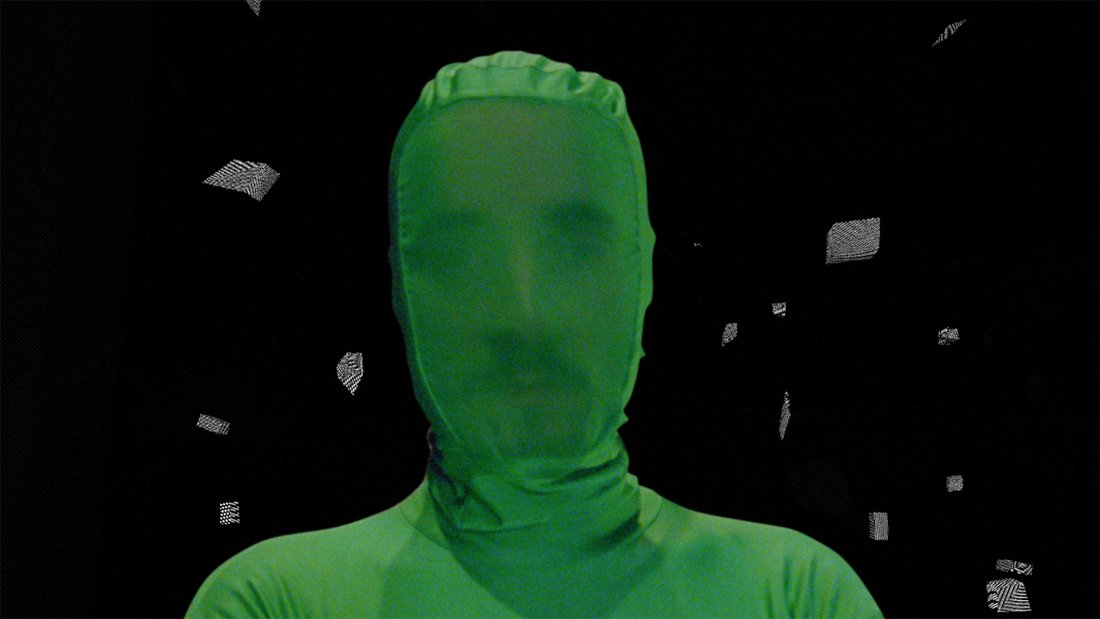
Plan fixe du film "THE RARE EVENT" de Ben Rivers et Ben Russell.
Courtesy Maja Hoffmann / Luma Foundation Collection.
En lien avec la présentation temporaire au Musée, niveau 4, Espace de consultation des collections vidéos, films, sons et œuvres numériques :
« Les Immatériaux » (1985). Aperçus d'une manifestation postmoderne au Centre Pompidou. Du 5 juillet au 30 octobre 2023
Présentation détaillée
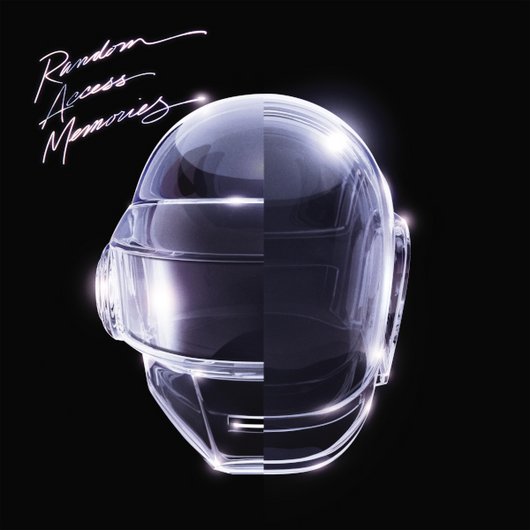
Couverture de l'album Daft Punk, "Random Access Memories" © Zaina
Daft Punk, Random Access Memories
Session d’écoute avec Sonorium
Musique Session d'écoute, rencontre
5 Grammy Awards et un triomphe instantané, un tube planétaire ("Get Lucky"), une production incroyable de précision et des collaborations prestigieuses (Pharrell Williams, Julian Casablancas, Panda Bear, Giorgio Moroder…), Random Access Memories, le dernier album de Daft Punk, a marqué les esprits et installé le duo comme une figure majeure de la pop contemporaine.
À l'occasion de l'édition 10e anniversaire de l'album culte le 12 mai dernier, le Centre Pompidou et Sonorium vous invitent à une session d'écoute de l'album en intégralité, dans des conditions exceptionnelles grâce à une installation sonore immersive réalisée par l’Ircam et une nouvelle technologie immersive développée par sa filiale Ircam Amplify.
Dimanche 9 juillet 2023 – gratuit sur réservation
Sessions précédées d'une introduction par Éric Jean-Jean et suivies d'une discussion avec le public
Réservation gratuite
Day-by-day program
Saturday, 8 July 2023
| |
|
Continuous
11am-1pm
|
Performance
Christian Falsnaes, First (2016)
|
|
Exhibition
Reconstitution virtuelle de l'exposition « Les Immatériaux »
|
| 1:30pm-2pm |
Meeting
« Beyond Matter »
Présentation de la publication conclusive du projet européen « Beyond Matter: Cultural Heritage on the Verge of Virtual Reality »
|
| 1:30pm-5pm |
Screening
Après « Les Immatériaux » : Films de pensée
Être Résistances d’Albert Serra (2016, 198 min.)
Cinéma 2, niveau –1
|
| 2pm-4pm |
Meeting
« Beyond Matter »
Présentation d'œuvres conçues dans le cadre de l'exposition « Matter, Non-matter, Anti-Matter »
Avec les artistes Jeremy Bailey, Damjanski, fabric | ch (Patrick Keller, Christian Babski, Christophe Guignard), Geraldine Juárez (en visioconférence), Carolyn Kirschner et Anne Le Troter
|
| 4pm-6pm |
Meeting
« Les Immatériaux » : Artistes et historiens en conversation
Avec Andreas Broeckmann, Katerina Thomadaki, Jean-Louis Boissier et Jean-Claude Fall
Modérée par Marcella Lista, Philippe Bettinelli et Marie Vicet (Centre Pompidou)
|
| 5:30pm-9pm |
Screening
Après « Les Immatériaux » : Films de pensée
Être Résistances d’Albert Serra (2016, 198 min.)
Cinéma 2, niveau –1
En présence du cinéaste
|
| 6pm-7:30pm |
Meeting
Après « Les Immatériaux » : Rencontre en partenariat avec LUMA Foundation
Avec Hans Ulrich Obrist, Philippe Parreno, Daniel Birnbaum, Anna Longo, Maja Hoffmann (en visioconférence) et Albert Serra
|
| 7:30pm-9pm |
>Screening
Après « Les Immatériaux » : Films de pensée
- The Rare Event de Ben Rivers et Ben Russell (2017, 48 min.)
- Resistances de Rachel Rose (2017-2019, 20 min.)
|
Sunday, 9 July 2023
| |
|
Reconstitution virtuelle de l'exposition « Les
Immatériaux »
|
Closing of the gallery 3 at the beginning of the day |
|
Continuous
3pm-9pm
|
Performance
Christian Falsnaes, First (2016)
|
|
4pm-6pm
6:30pm-8:30pm
|
Listening session, meeting
Daft Punk, Random Access memories
Introduction par Éric Jean-Jean
Session d'écoute
Discussion avec le public
|
Guests
|
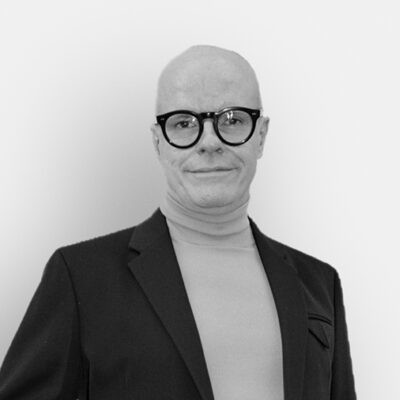
Visual arts
|
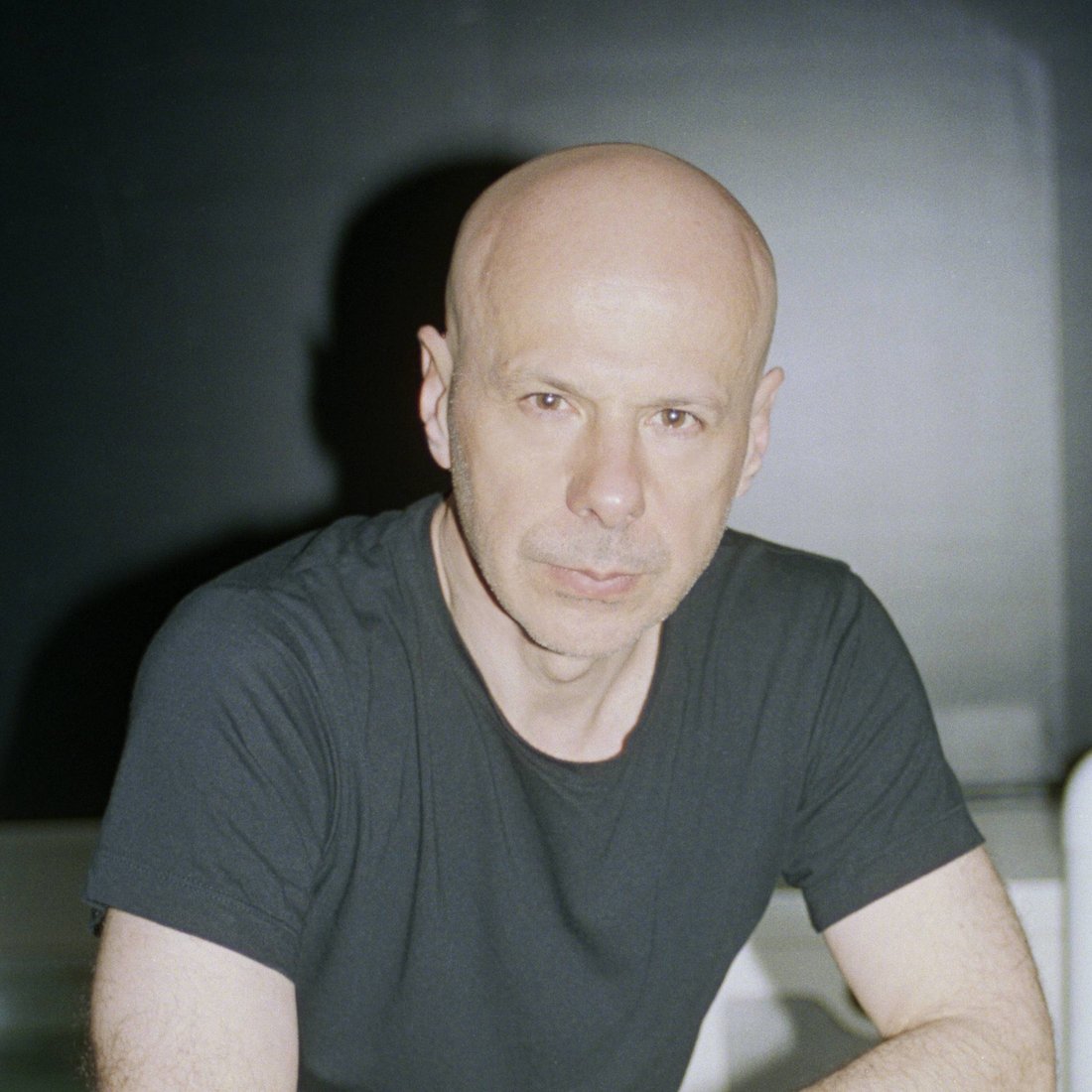
Visual arts
|
|
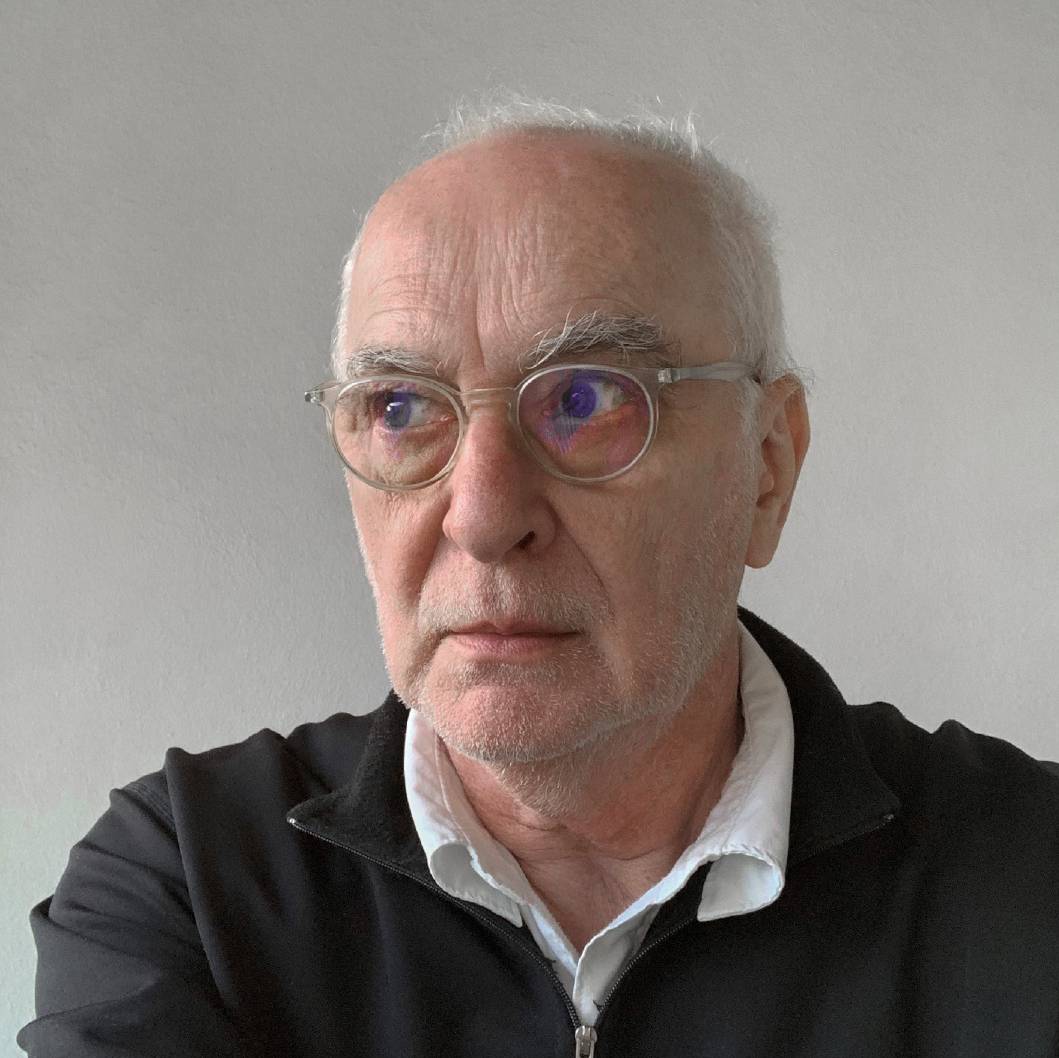
New media
|
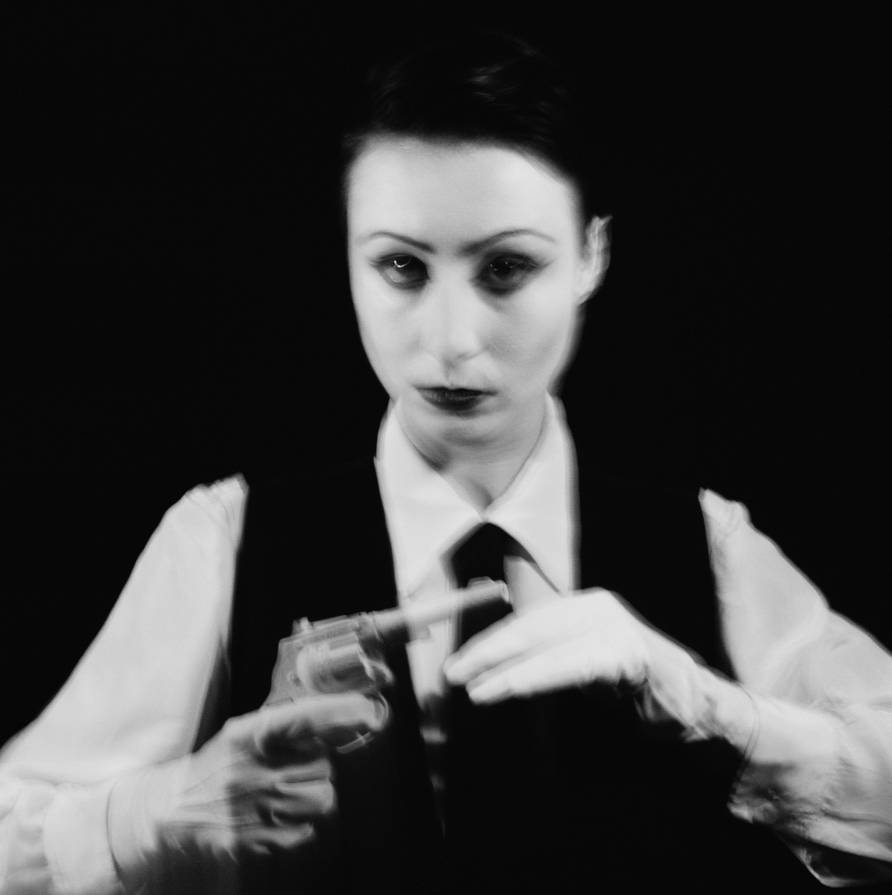
New media
|
Also in the presence of:
Jeremy Bailey, Daniel Birnbaum, Andreas Broeckmann, Damjanski, fabric | ch (Patrick Keller, Christian Babski, Christophe Guignard), Jean-Claude Fall, Maja Hoffmann, Éric Jean-Jean, Geraldine Juárez, Carolyn Kirschner, Anna Longo, Marianne Schädler, Albert Serra, Anne Le Troter.

